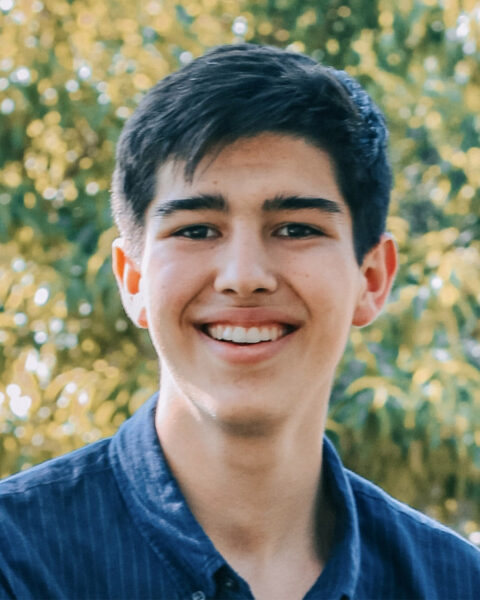Huskies Tackle Exciting PEAK Projects for Fall of 2023
This fall, we received a record number of applications for our PEAK Experiences Base-Camp, Ascent and Summit Awards. After careful deliberations, we’re proud to share the names of the students undertaking research and creative projects this fall, along with information about their dedicated mentors working across the colleges. Projects this fall are tackling a range of topics and modes with students developing biodegradable adhesives, creating a new tarot deck, building better rocket parts, and more. Congratulations to these students and many thanks to their generous mentors.
BASE CAMP AWARDS
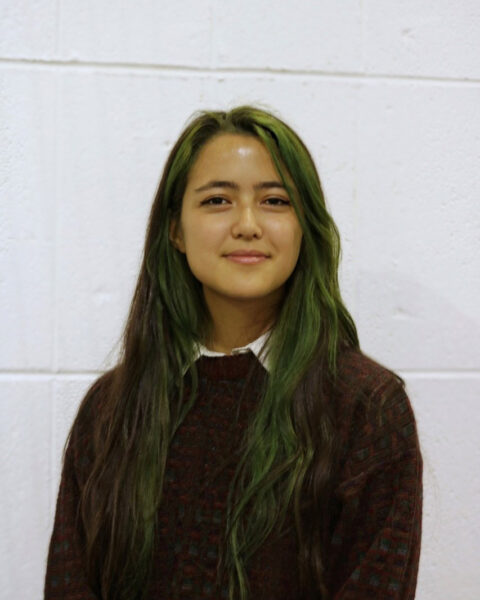 Jaime Adams COS’26, “Quantitation of Tire Road Wear Particles by Py-GC-MS”
Jaime Adams COS’26, “Quantitation of Tire Road Wear Particles by Py-GC-MS”
Mentor: Zhenyu Tian, COS, Chemistry & Chemical Biology
The purpose of the project is to make a calibration curve using data from running known samples of Styrene-Butadiene Rubber (a large component of tire particles) through a pyrolysis GC-MS. The goal is to be able to detect SBR in complex samples collected from environments where tire road wear particles can be found.
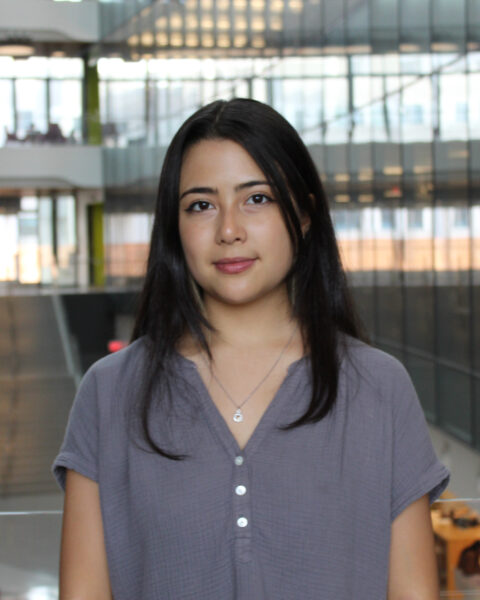 Sarah Adams COE’26, “Live Particle Study in Microfluidic Channels”
Sarah Adams COE’26, “Live Particle Study in Microfluidic Channels”
Mentor: Xiaoyu Tang, COE, Mech & Industrial Engineering
This lab project focuses on developing and testing methods of biological particle delivery into dead-end channels in a microfluidic setting. The process of isolating key particles from biological fluids can potentially improve specialized blood testing and other identification-based practices.
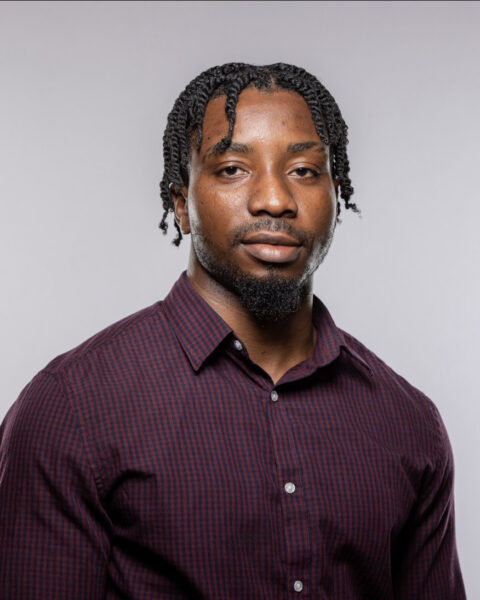 Damilola Adetunla COS’23, “Mapping the Main Adhesive Pilus Genes’ Regulatory Sequences in Acenitobacter baumannii”
Damilola Adetunla COS’23, “Mapping the Main Adhesive Pilus Genes’ Regulatory Sequences in Acenitobacter baumannii”
Mentor: Veronica Godoy-Carter, COS, Biology</span
The project aims to study the Csu gene’s promoter region, which plays a crucial role in A. baumannii’s surface attachment. This research will help in finding ways to stop or treat biofilm-related infections, improving healthcare outcomes.
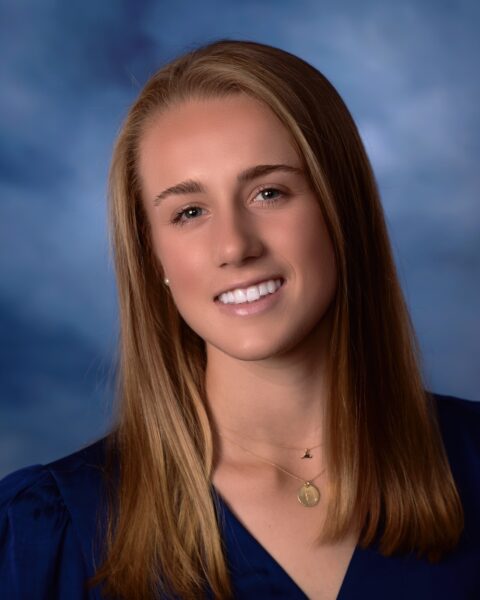 Elle Arcand COE’26, “Role of Metallopeptides in Alzheimer’s Disease”
Elle Arcand COE’26, “Role of Metallopeptides in Alzheimer’s Disease”
Mentor: Vasiliki Lykourinou, COS, Chemistry & Chemical Biology
Alzheimer’s disease has been linked to the formation of amyloid beta (Aβ), for these peptides have been previously observed to induce neuron degeneration. This project examines how suspected amyloid beta and metal complexes–metallopeptides–cause oxidative stress of neurotransmitters and DNA that leads to neural deterioration.
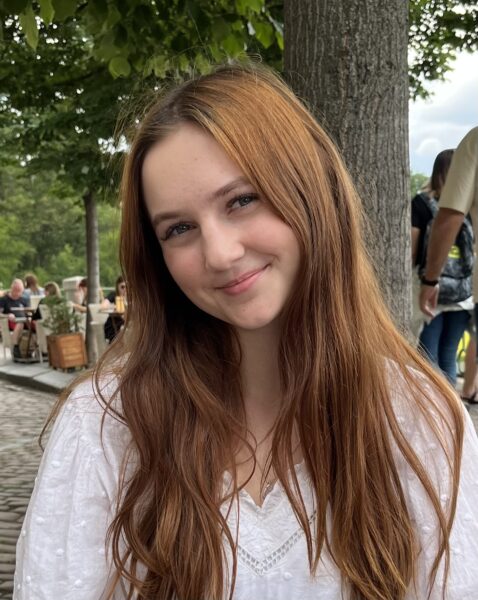 Peyton Benz COS’26, “Color Mechanisms”
Peyton Benz COS’26, “Color Mechanisms”
Mentor: Rhea Eskew, COS, Psychology
The purpose of the project is to examine how the mechanisms that occur in the brain when detecting visual stimuli connect to the observable behavior, as well as how these might be affected by other factors such as the speed of the task or an individual’s color threshold.
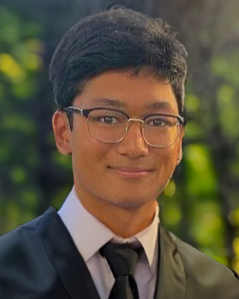 Aaron Bhattachan COE’26, “MyoArm: Affordable Below-the-Elbow Prosthetic with Human-Like Range of Motion, HRV-Based Stress Tracking, and Myoelectric Sensing”
Aaron Bhattachan COE’26, “MyoArm: Affordable Below-the-Elbow Prosthetic with Human-Like Range of Motion, HRV-Based Stress Tracking, and Myoelectric Sensing”
Mentor: Michael Jaeggli, COE, Bioengineering
MyoArm is an affordable below-the-elbow prosthetic limb with a human-like range of motion, integrated HRV-based stress tracking, and myoelectric sensing capabilities, all aimed at improving the lives of medically underserved amputees. This innovation aims to redefine prosthetic functionality, break cost barriers, and provide insights into enhanced user well-being and control.
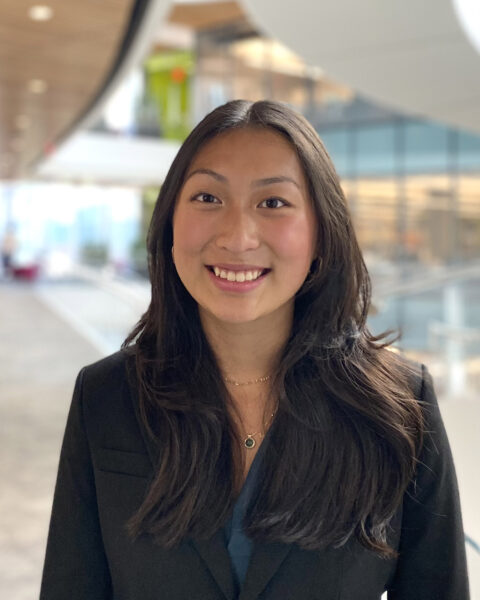 Iris Chang COS’26, “Comparing Cell Populations Derived from Neonatal Rat Brainstems and Induced Neurospheres”
Iris Chang COS’26, “Comparing Cell Populations Derived from Neonatal Rat Brainstems and Induced Neurospheres”
Mentor: Abigail Koppes, COE, Chemical Engineering
The purpose of the project is to culture neurospheres in specially designed media with the hope that the cell populations derived from neurospheres are the same as the cell populations directly harvested from rat brainstems. This project utilizes immunocytochemistry to stain for specific cell type populations and compare the results.
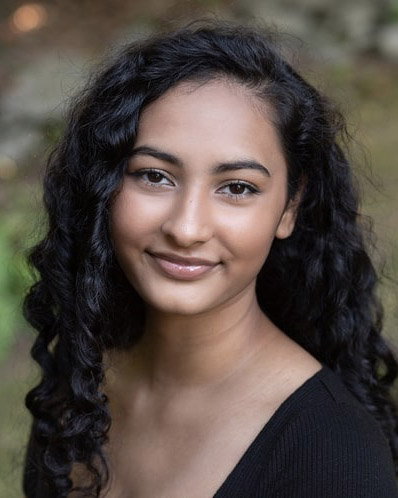 Advika Chaudhari Bouvé’25, “Reproductive Justice Research Collaborative”
Advika Chaudhari Bouvé’25, “Reproductive Justice Research Collaborative”
Mentor: Suzanna Walters, CSSH, Communication Studies
The RJRC’s mission is to empower community and advocacy organizations by strengthening their messaging, fundraising, and public advocacy work, including scholarly research. It also serves as a central hub for interdisciplinary projects, curated information, and data related to reproductive justice initiatives.
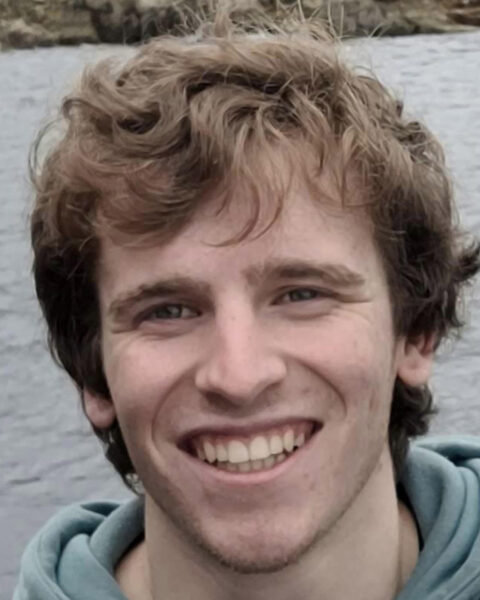 Zachary Cohen COS’26, “Using Machine Learning to Generate Heat Maps of Hydrogen Deuterium Mass Spectrometry Data”
Zachary Cohen COS’26, “Using Machine Learning to Generate Heat Maps of Hydrogen Deuterium Mass Spectrometry Data”
Mentor: Thomas Wales, COS, Chemistry & Chemical Biology
Hydrogen Deuterium Exchange Mass Spectrometry is an analytical tool used to probe protein structure and dynamics. Representing data in clear and concise ways using heat maps generated by machine learning algorithms can improve accuracy and reduce labor compared to current data visualization methods in the field.
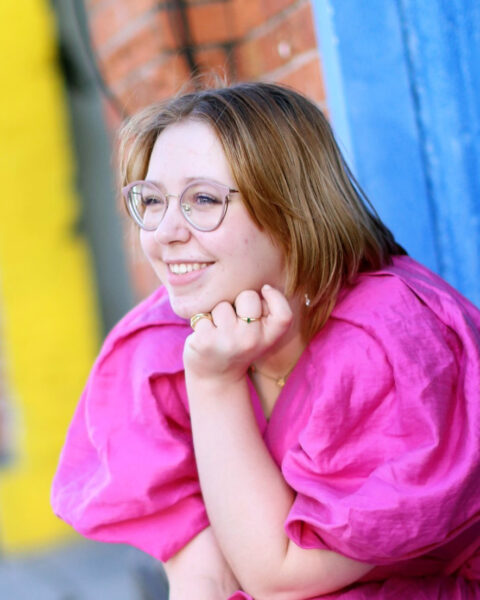 Ann Crabtree COE’28, “Developing Novel Biodegradable Adhesives”
Ann Crabtree COE’28, “Developing Novel Biodegradable Adhesives”
Mentor: Ruobing Bai, COE, Mech & Industrial Engineering
The purpose of the project is to advance efforts for a more sustainable future. The aims of this research are to synthesize materials and test their mechanical properties and biodegradability.
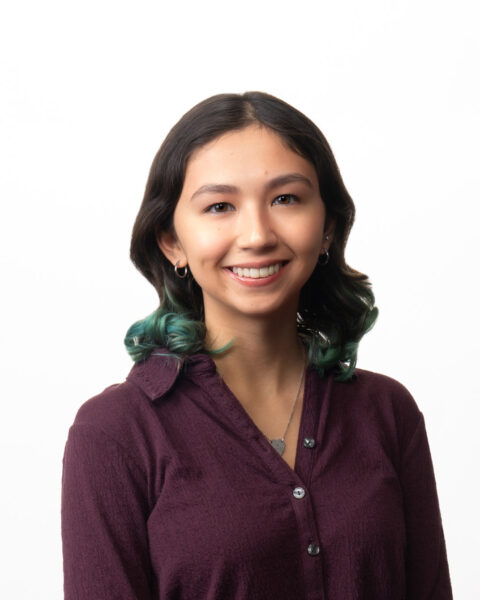 Natalie DeLaCruz CSSH’25, “Triangulation of Production & Attitudes: Inclusive Gender in Spanish”
Natalie DeLaCruz CSSH’25, “Triangulation of Production & Attitudes: Inclusive Gender in Spanish”
Mentor: Gorka Basterretxea Santiso, CSSH, Linguistics
Through research with Dr. Basterretxea Santiso on this project, the aims are to assist with data collection and analysis of gender-inclusive language in Spanish. This will provide a better understanding of how Spanish speakers and learners view different kinds of gender-inclusive terms (e.g. Latinx, Latine, Latin@, etc.).
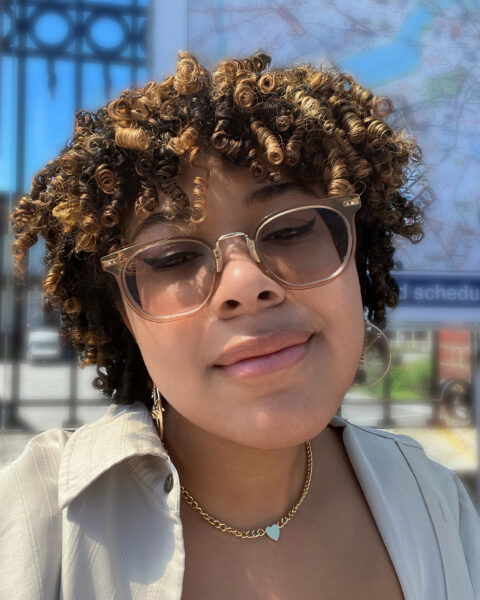 Arielle Frey CAMD’24, “Anansi Tarot Card”
Arielle Frey CAMD’24, “Anansi Tarot Card”
Mentor: Clareese Hill, CAMD, African-American Studies
An homage to Pamela Colman Smith, the overlooked illustrator of the famous Rider-Waite Tarot deck, this illustrated tarot deck revives her artistic legacy. It reimagines the major arcana through Smith’s style, enriched by the Jamaican Anansi tales, challenging the dominance of the white patriarchal perspective of Waite.
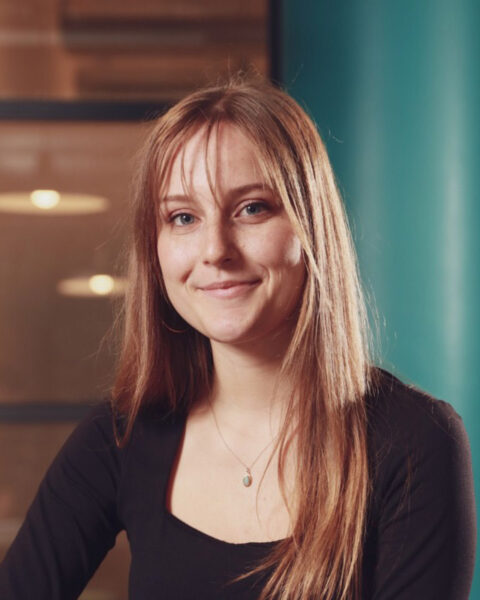 Kayla Gillen COE’25, “The Emerald Tutu/CURES Lab”
Kayla Gillen COE’25, “The Emerald Tutu/CURES Lab”
Mentor: Julia Hopkins, COE, Civil & Environmental Engineer
The Emerald Tutu examines how constructed floating wetlands can impact wave energy, flood reduction, and habitat creation. Work within the CURES lab supports this project as well as a general understanding of coastal engineering and ecological problems such as nutrient uptake or vegetation density.
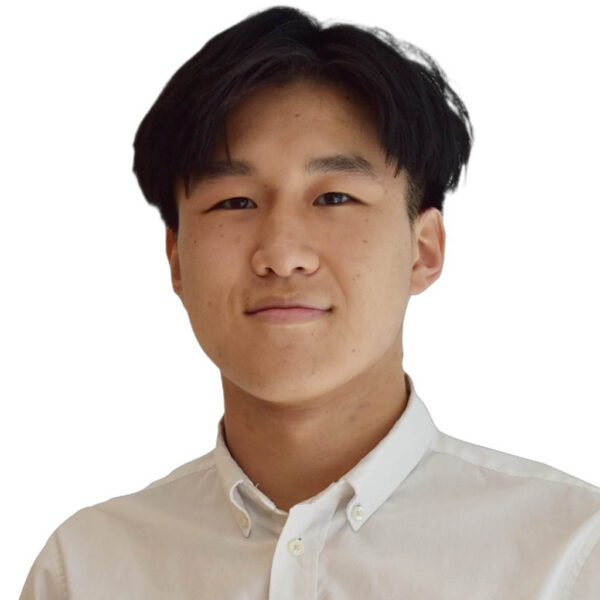 Gregory Guo DMSB’24, “Climate Exposure of Insurers: Evidence from CLO Investments”
Gregory Guo DMSB’24, “Climate Exposure of Insurers: Evidence from CLO Investments”
Mentor: Weiling Liu, DMSB, Finance & Insurance
Insurance companies may be less attentive to climate risk in some of their asset holdings if said holdings are securitized (‘packaged’) in financial derivative products such as Collateralized Loan Obligations. This oversight can translate to misallocation of capital to less climate-friendly companies, also known as “brown firms.”
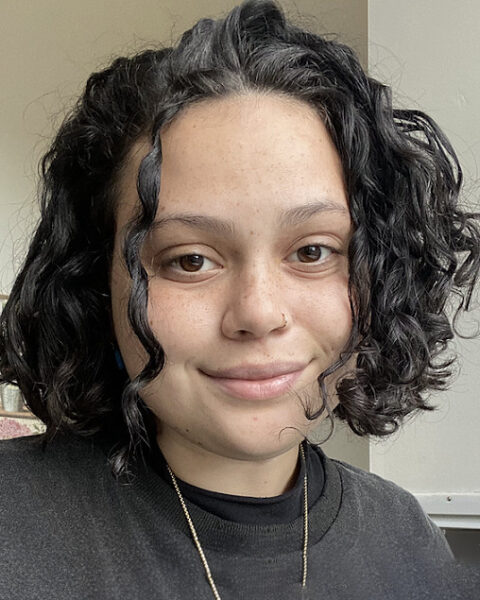 Paige Gurstein CAMD’25, “Anansi Tarot Deck”
Paige Gurstein CAMD’25, “Anansi Tarot Deck”
Mentor: Clareese Hill, CAMD, African-American Studies
An homage to Pamela Colman Smith, the overlooked illustrator of the famous Rider-Waite Tarot deck, this illustrated tarot deck revives her artistic legacy. It reimagines the major arcana through Smith’s style, enriched by the Jamaican Anansi tales, challenging the dominance of the white patriarchal perspective of Waite.
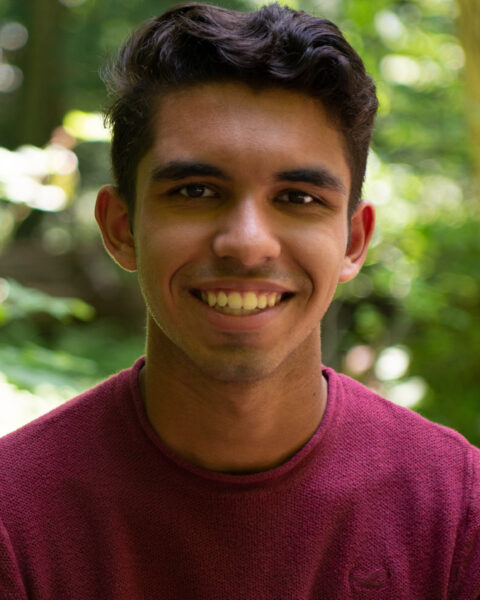 Adam Hakansson COE’26, “Temperature Control to Decrease Diffusion Time in HPLC”
Adam Hakansson COE’26, “Temperature Control to Decrease Diffusion Time in HPLC”
Mentor: Timothy Lannin, COE, Bioengineering
The goal is to develop an accurate temperature control system that can improve the efficiency of liquid chromatography and thus decrease diffusion time and, thus, operational cost. Mathematical modeling of heat transfer will be necessary to develop the control scheme, which will be determined empirically.
 Kyra Holmes Khoury’26, “Understanding Individual Differences in Working Memory Training and Transfer in Older Adults at Risk of Alzheimers Disease and Related Dementias”
Kyra Holmes Khoury’26, “Understanding Individual Differences in Working Memory Training and Transfer in Older Adults at Risk of Alzheimers Disease and Related Dementias”
Mentor: Aaron Seitz, COS, Psychology
I hope to not only gain insight on the research that the BGC and SoundMind Collaboratory conducts– specifying what types of cognitive training is effective for different diverse populations– but to also gain experience recruiting/running participants and getting a first-hand look at how research is conducted.
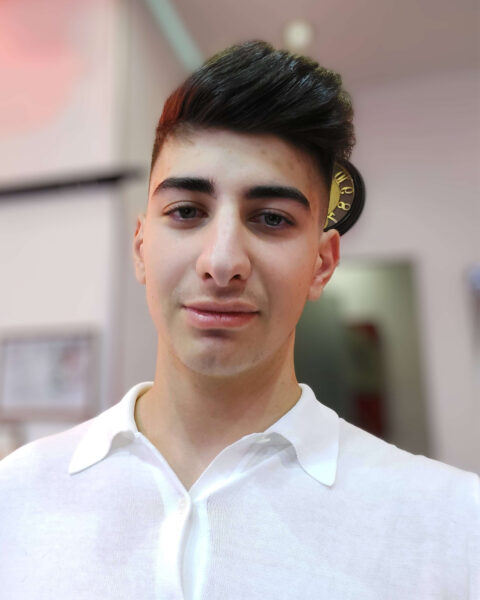
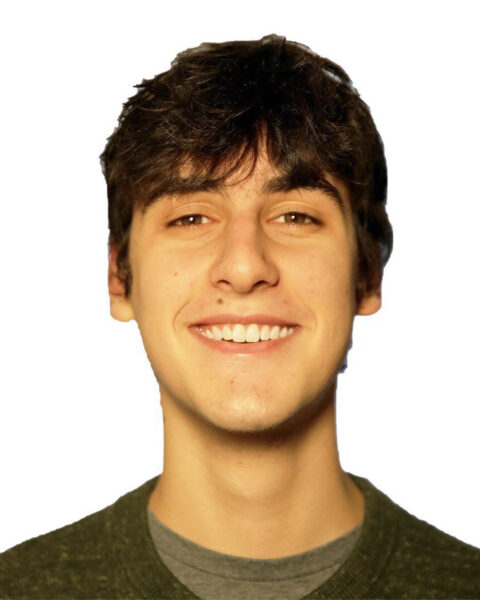 Farhad Ibrahimzade COE’26 & Julius Murphy COE’24 “Modular Gripper for Building in Space”
Farhad Ibrahimzade COE’26 & Julius Murphy COE’24 “Modular Gripper for Building in Space”
Mentor: Professor Tom Consi, COE, Electrical and Comp Engineering
Colonization of Mars has been a goal of many people, but in order to achieve this, safe structures have to be created. We are designing a modular gripper system for aerial drones to construct structures from various construction materials on other planets. The drone will be able to dock to various gripping mechanisms that can accommodate working with different kinds of materials to build structures autonomously. We are planning on displaying our final designs and results at the SEDS/NURobotics showcase night, and hopefully, this will generate further interest in the project.
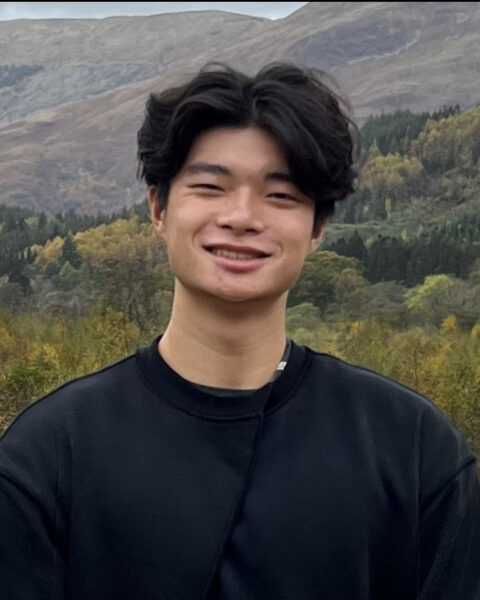 Darren Kim COS’26, “Molecular Validation of Protein Translocation through Epithelial Cells”
Darren Kim COS’26, “Molecular Validation of Protein Translocation through Epithelial Cells”
Mentor: Neel Joshi, COS, Chemistry & Chemical Biology
The intestinal mucosa remains a difficult barrier for medication to bypass without inducing cell or therapeutic destruction. I am experimenting with utilizing the cholix domain from Vibrio Cholerae to help proteins safely translocate to targets outside the gut lumen for systemic circulation.
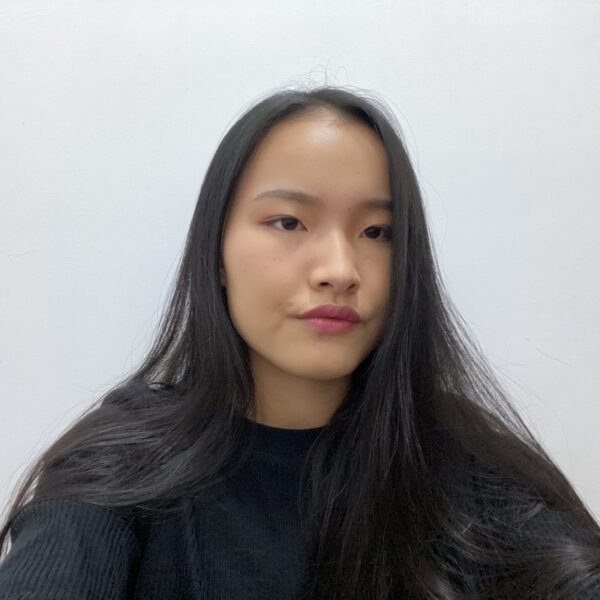 Luisa Li Khoury’26, “Code Editing Large Language Models with Reflection”
Luisa Li Khoury’26, “Code Editing Large Language Models with Reflection”
Mentor: Arjun Guha, College of Computer and Information Science, Computer Science
LLMs, or Large Language Models, are artificial intelligence systems that leverage deep learning techniques to comprehend and generate human-like text. They possess the capability to process and generate natural language and code, given the appropriate data and training. This project ranges from creating initial proof-of-concept examples to iteratively fine-tuning the performance of our final model
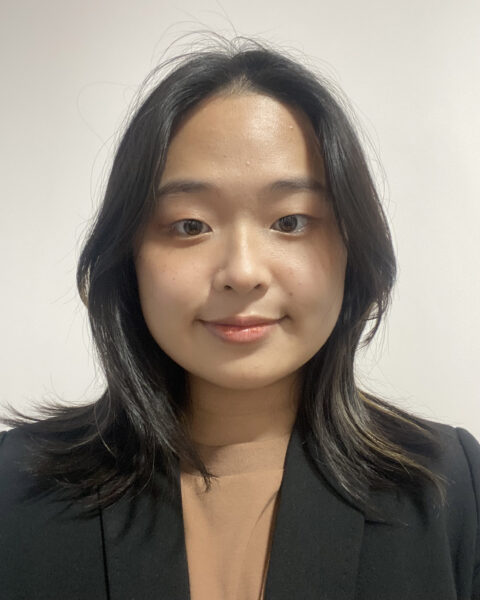 Vivian Lin COS’26, “Stroke Mortality Rates After COVID-19”
Vivian Lin COS’26, “Stroke Mortality Rates After COVID-19”
Mentor: Nasim Ferdows, Bouvé, Health Sciences
This research consists of trying to find the relationship between the mortality rates of stroke patients and hospital length of stay before and after COVID-19 and evaluating how the results of this study can improve policies and improve patient care.
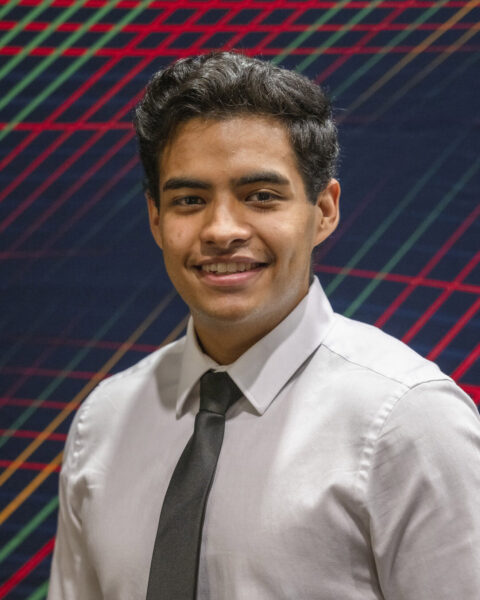 Ziven Lopez COE’27, “Designing a Modular Gripper Attachment System to Increase Drone Versatility”
Ziven Lopez COE’27, “Designing a Modular Gripper Attachment System to Increase Drone Versatility”
Mentor: Joshua Hertz, COE, Electrical and Comp Engineering
This project works to construct a modular platform for drone tools featuring a range of attachments. This innovative system will broaden the drone’s practical applications, enabling functions such as a claw mechanism for grasping objects, a camera for capturing aerial footage, and an accelerometer for precise data collection.
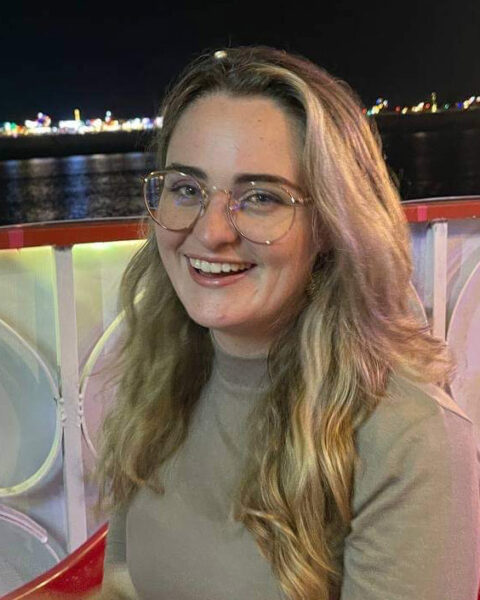 Madison McDougall CSSH’25, “The Promise of Mitigation/Adaptation Synergies in Multilateral Finance: Analysis of Cross-Cutting Projects in the GCF”
Madison McDougall CSSH’25, “The Promise of Mitigation/Adaptation Synergies in Multilateral Finance: Analysis of Cross-Cutting Projects in the GCF”
Mentor: Laura Kuhl, CSSH, International Affairs
The research aims to describe the experience of the GCF with projects possessing both adaptation and mitigation objectives, analyze the synergies between the goals, and identify potential points to improve project design to inform better the future strategies of multilateral climate finance, national policy, and planning processes.
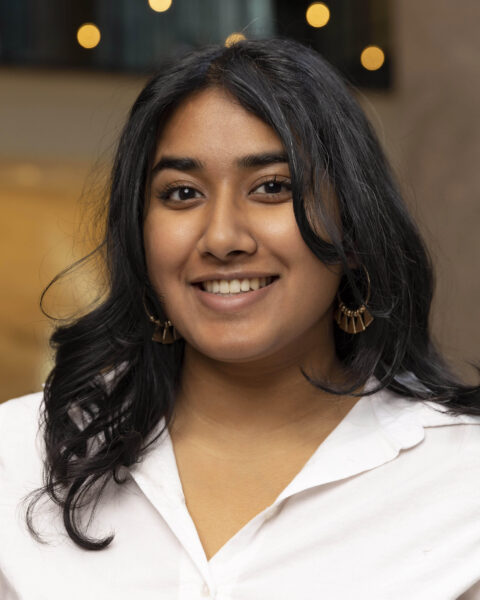 Janaki Mehta CSSH’25, “Exploring the Intersection of Climate and Public Safety in the Criminal Justice System through Research Guides”
Janaki Mehta CSSH’25, “Exploring the Intersection of Climate and Public Safety in the Criminal Justice System through Research Guides”
Mentor: Leo Beletsky, CSSH, Law and Public Policy
To more deeply explore the intersection between climate change and the criminal justice system, this project will create fact sheets for many stakeholders. These written guides will be a collection of written projects, scientific and nonscientific articles, op-eds, and original research done by the Action Lab.
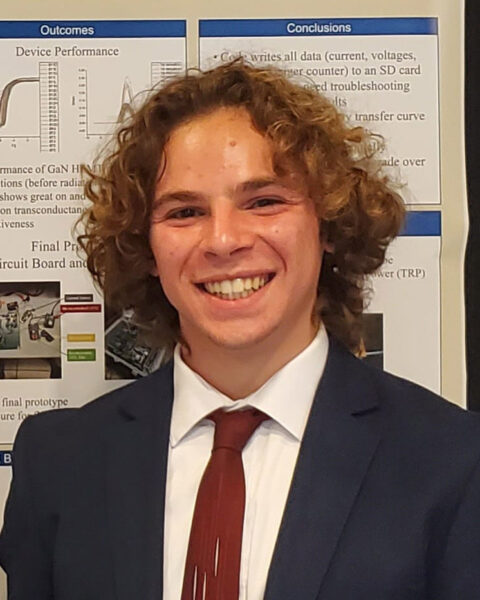 Jan Passas COE’26, “Biocompatible Photovoltaic Cell Fabrication and Characterization for Mitigating Electronic Waste”
Jan Passas COE’26, “Biocompatible Photovoltaic Cell Fabrication and Characterization for Mitigating Electronic Waste”
Mentor: Canek Fuentes-Hernandez, COE, Electrical and Comp Engineering
This project aims to create organic biocompatible electronics that function in low-voltage systems by using a nanocellulose substrate for a paper-like design. This would allow for non-harmful electronics to be directly implemented into new applications within nature without worrying about electronic waste or another ecological impact from the device.
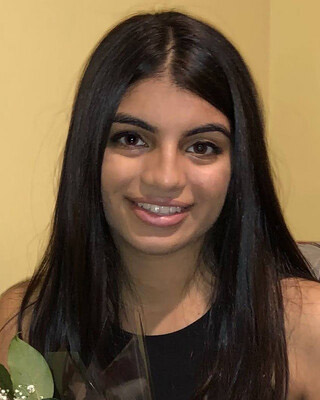 Anisha Patel COS’26, “Correlation Between Improving Brain Function and the Specific Age Range in Individuals who are Susceptible to Cognitive Decline”
Anisha Patel COS’26, “Correlation Between Improving Brain Function and the Specific Age Range in Individuals who are Susceptible to Cognitive Decline”
Mentor: Aaron Seitz, COS, Psychology
The aim of this research is to analyze brain data from older adults and the target general population in hopes of finding an age where cognitive intervention is most successful. This will translate into improving brain function in individuals as they progress.
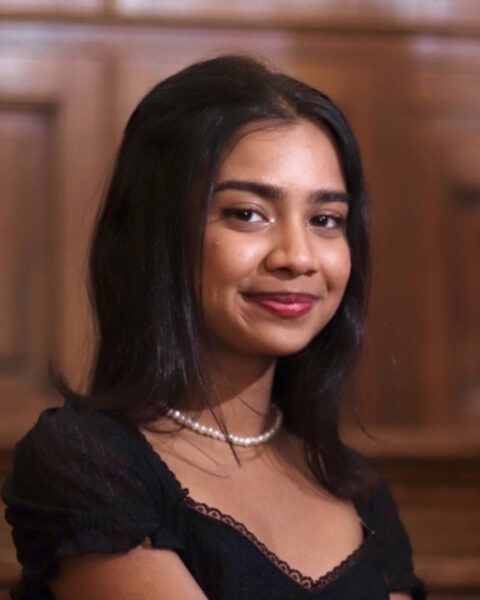 Prachi Patel COS’26, “Structural Abnormalities in Schizophrenia”
Prachi Patel COS’26, “Structural Abnormalities in Schizophrenia”
Mentor: Jenn Ingemi, COS, Psychology
In this project, I will continue investigating the neural structural abnormalities individuals with Psychosis face throughout disease progression to identify biomarkers for future therapeutics.
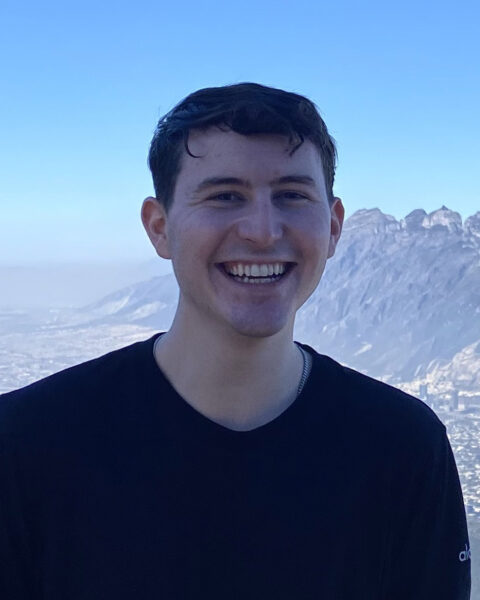 Patricio Reyes Gomez COS’24, “The Impact of Social and Racial Context on Discrimination Attributions for Identity Questioning”
Patricio Reyes Gomez COS’24, “The Impact of Social and Racial Context on Discrimination Attributions for Identity Questioning”
Mentor: Analia Albuja, COS, Psychology
The goal of this project is to explore the relationship between perceived essentialism (i.e., the idea that humans belong to rigid and uniform groups) and discrimination attributions in identity questioning experiences for multiracial people.
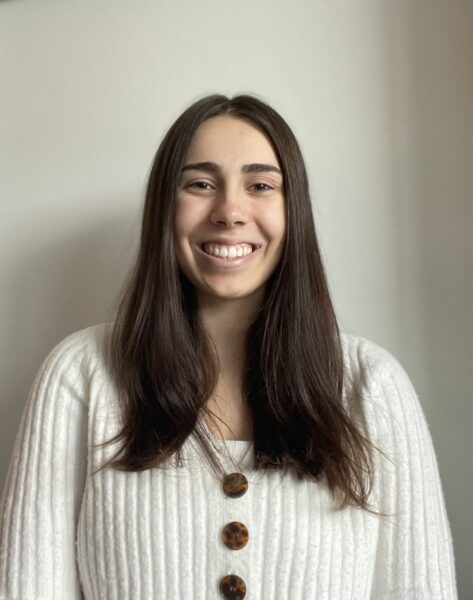 Rebecca Britney Brogaard Salerno COS’26, “Characterization of Protein Translocation across Epithelial Cells”
Rebecca Britney Brogaard Salerno COS’26, “Characterization of Protein Translocation across Epithelial Cells”
Mentor: Neel Joshi, COS, Chemistry & Chemical Biology
This project aims to study protein translocation domains that can facilitate diffusion across the epithelial cell layer using in vitro methods to generate orally administered protein-based therapeutics. Another goal is to find additional parts that can more efficiently reduce this mechanism.
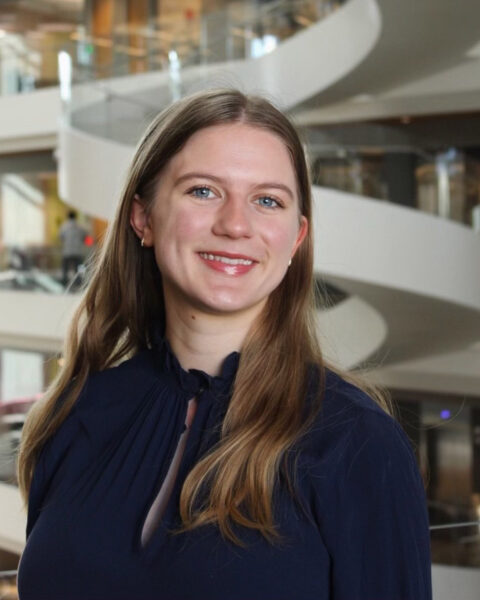 Eleanor Sanders Bouvé’25, “Attitudes and Access of Black Individuals Towards Mindfulness Practices”
Eleanor Sanders Bouvé’25, “Attitudes and Access of Black Individuals Towards Mindfulness Practices”
Mentor: Laura Dudley, Bouvé College of Health Sciences, Applied Psychology
This study attempts to understand racial disparities in mindfulness practice as well as barriers that may be creating these disparities in order to find new strategies to improve access and allow a broader range of people to benefit from practicing mindfulness.
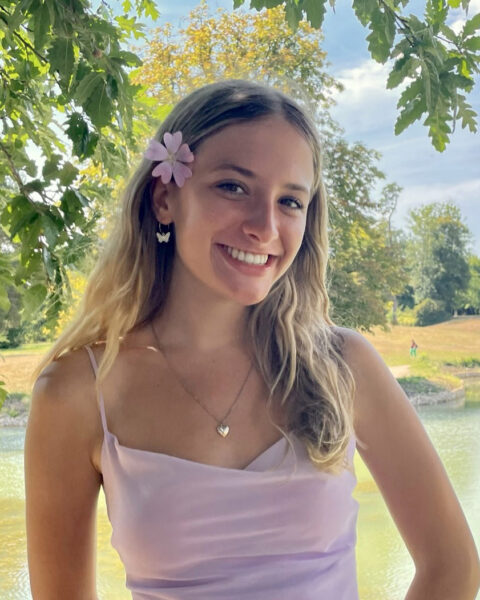 Hannah Sims CSSH’26, “Non-Standard Gender Agreement Production vs Gender Agreement Errors in Spanish”
Hannah Sims CSSH’26, “Non-Standard Gender Agreement Production vs Gender Agreement Errors in Spanish”
Mentor: Gorka Basterretxea Santiso, CSSH, World Languages Center
This research will explore gender agreement production in Spanish spoken in the Basque Country in northern Spain by examining audio and orthographic transcriptions. Basque, unlike Spanish, does not produce grammatical gender, and in analyzing this in a region where these languages interact, the influence of sociolinguistics can be determined.
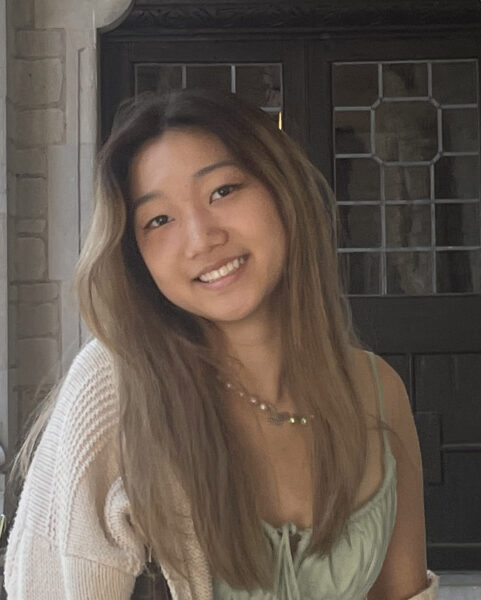 Chloe Sohn Bouvé’25, “Speech Modification Strategies in Children With Cerebral Palsy”
Chloe Sohn Bouvé’25, “Speech Modification Strategies in Children With Cerebral Palsy”
Mentor: Kristen Allison, Bouvé, Communication Sciences & Disorders
This project uses motion-capture technology to compare the effectiveness of three speech modification strategies to increase speech intelligibility in children with cerebral palsy. We aim to identify kinematic and acoustic measures that predict optimal strategies for individuals with reduced speech intelligibility.
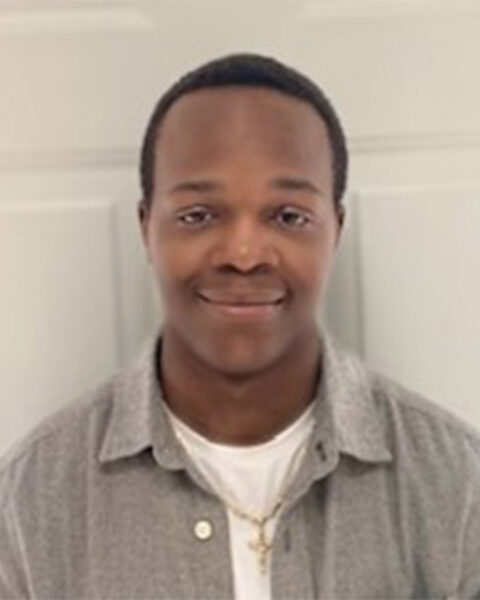
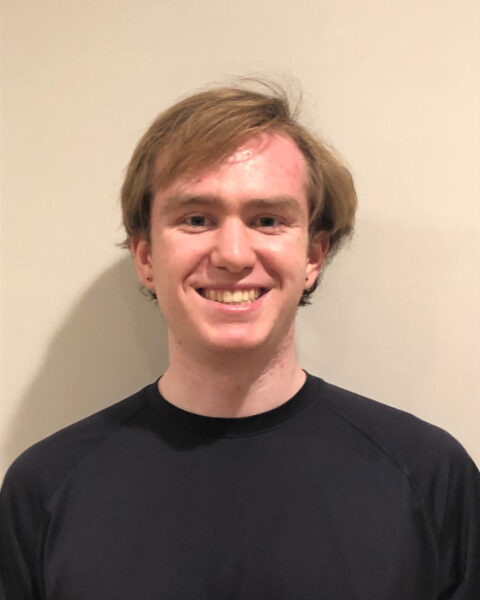 Stephen Sodipo COE’26 & Thomas Rowan COE’25, “Building a Modular 3D-Printed Robot Arm”
Stephen Sodipo COE’26 & Thomas Rowan COE’25, “Building a Modular 3D-Printed Robot Arm”
Mentor: Professor Thomas Consi, COE, Electrical and Comp Engineering
Remote-operated robot arms have the potential to make a huge impact in industries where detailed human work is required in environments where humans cannot always access them. We seek to build a robot arm that is capable of performing high-dexterity tasks by being controlled remotely through the gestures of another human. We will use computer vision and a depth-sensing camera to accomplish this. We hope to build a fully functional robot arm that can precisely track and follow the movements of a human arm to make the possibility of remote care and exploration a reality.
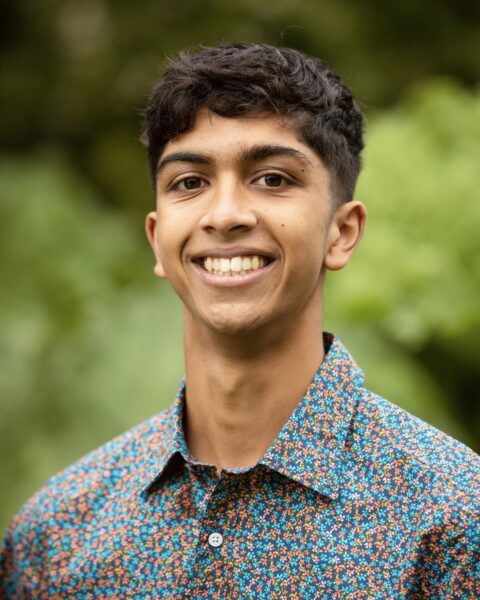 Ishaan Subramanian COE’26, “Modeling Antigen-Antibody Interactions in Viral Glycoproteins”
Ishaan Subramanian COE’26, “Modeling Antigen-Antibody Interactions in Viral Glycoproteins”
Mentor: Srirupa Chakraborty, COE, Chemical Engineering
Spike glycoproteins are common in many viruses and have properties that discourage antibody binding. This project aims to analyze how antibodies interact with viral antigens through structural parameterization. A set of antibody-antigen complex structures will be analyzed to extract meaningful trends to help create predictive vaccine design models.
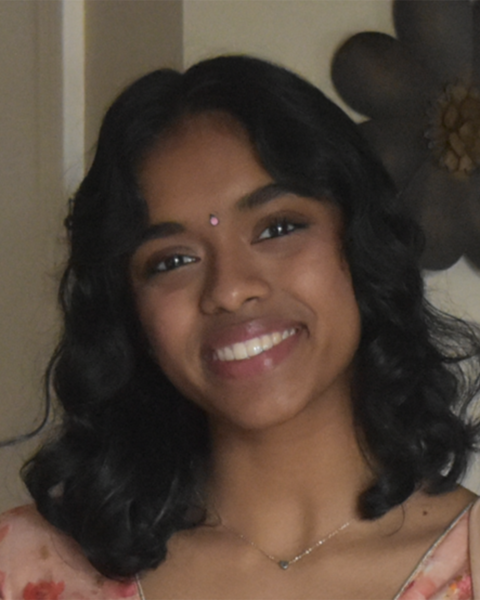 Ann Titus COE’26, “Loading of Paclitaxel in the Lamellar Phase of a Nonionic Surfactant and Drug Delivery Applications: Monte Carlo Simulation”
Ann Titus COE’26, “Loading of Paclitaxel in the Lamellar Phase of a Nonionic Surfactant and Drug Delivery Applications: Monte Carlo Simulation”
Mentor: Professor Mona Minkara, COE, Bioengineering
This project aims to find an optimized structure where Paclitaxel, a cancer drug, is loaded into the bilayer of surfactant. Surfactants can help to carry the drug to the lungs, which is where drug delivery is involved; for this project, this drug treats lung cancer, and surfactant is found in the lungs. Monte Carlo simulations, a computational method, will be used to model and analyze the data. There will be a configuration with the lowest free energy value, meaning it is the most optimal. The results will be shared at internal/external conferences and will be published.
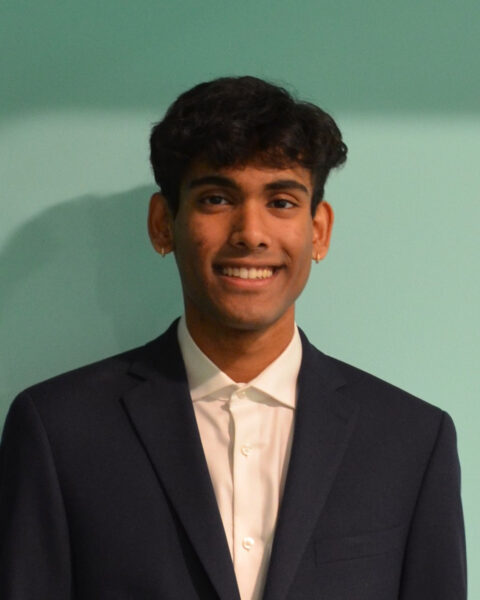 Nitinmanish Vallabhu COE’26, “Development of a Multi-Functional Battery Module”
Nitinmanish Vallabhu COE’26, “Development of a Multi-Functional Battery Module”
Mentor: Juner Zhu, COE, Mech & Industrial Engineering
The goal of this project is to develop a multi-functional battery module that will be used for analyzing pressure management as well as equipping sensors to assess health and safety. Additionally, we will be developing methods of convenient disassembly for reusing and recycling the battery module.
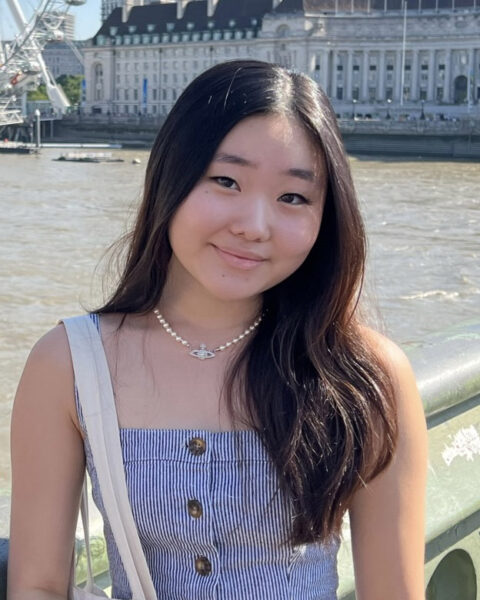 Erika Yacharn COS’25, “Improving the Transferability of Brain Training to Cognitive Function in Older Adults”
Erika Yacharn COS’25, “Improving the Transferability of Brain Training to Cognitive Function in Older Adults”
Mentor: Aaron Seitz, COS, Psychology
Many mainstream brain training apps designed to help mitigate age-related cognitive decline currently lack substantial evidence demonstrating their effectiveness in improving cognitive functions relevant to everyday life. This project will explore the use of multisensory facilitation to enhance the transferability of brain training to real-world activities in older adults.
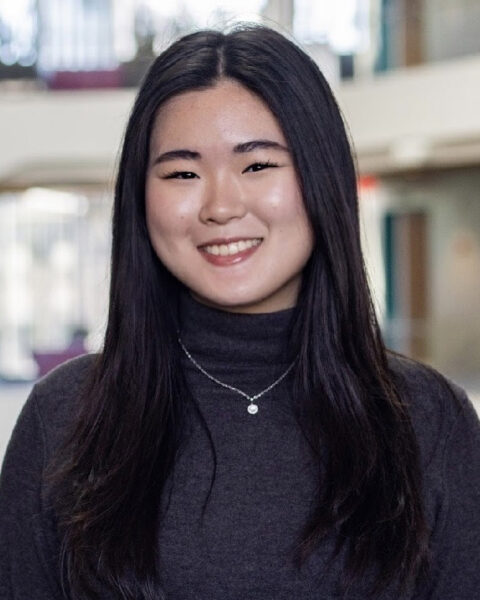 Michelle Yu COS’27, “Fragmentation Propensity of Cysteic Acid in the SOD1 Protein”
Michelle Yu COS’27, “Fragmentation Propensity of Cysteic Acid in the SOD1 Protein”
Mentor: Jeffrey Agar, COS, Chemistry & Chemical Biology
This project will analyze peptide fragments of the SOD1 protein to better understand the fragmentation propensity, or the likelihood of protein fragmentation at a certain pair of residues, of cysteic acid, specifically looking at the Cysteine111 amino acid since it plays a major role in Amyotrophic Lateral Sclerosis.
ASCENT AWARDS
Matthew Alkire COS’25, “Effects of Dextromethorphan as a Sedative on the Electric Organ Discharge of Apteronotus leptorhynchus”
Mentor: Professor Gunther Zupanc, COS, Biology
The purpose of the project is to see the effects of compounds with sedative properties on the electric organ discharge (EOD) of the weakly electric fish Apteronotus leptorhynchus. Because the EOD is controlled in a one-to-one fashion by a structure called the pacemaker nucleus, changes in the EOD offer direct insight into the neural effects of the compound. To measure this, the changes in the EOD frequency will be measured during and after exposure to the compound. If successful, this offers a uniquely far cheaper, easier alternative to other methods of understand different sedatives’ effects on neurophysiology.
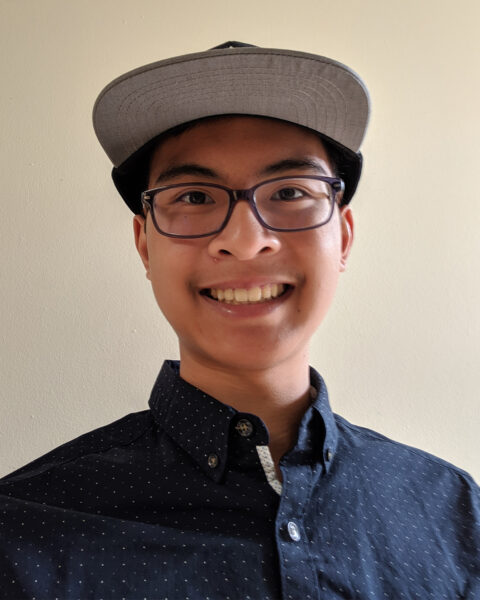 Quinn Arbolante Khoury’24, “Classifying Meshes via Depth-Buffers and Fourier Analysis”
Quinn Arbolante Khoury’24, “Classifying Meshes via Depth-Buffers and Fourier Analysis”
Mentor: Professor Mike Shah, Khoury, Computer Science
Objects you see in video games and animation are often represented with a structure known as polygon meshes. These meshes often have large file sizes and need to be simplified in order to be efficiently displayed on the screen. There are various ways to simplify meshes; we are working on automating the process of choosing the best method to use in order to simplify a mesh.
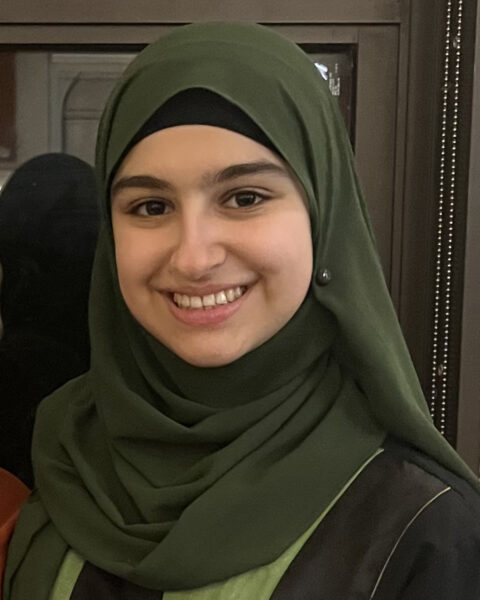 Dareen Bakr COS’26, “The Evolution of Retinoic Acid Production in Amphibian Limb Development”
Dareen Bakr COS’26, “The Evolution of Retinoic Acid Production in Amphibian Limb Development”
Mentor: Professor James Monaghan, COS, Biology
This research will characterize the expression of genes related to the retinoic acid (RA) pathway in the developing limbs of amphibians. Differences in the expression of these genes between axolotls, newts, frogs, and zebrafish will be used to outline the evolution of the pathway. RA is an important patterning molecule, and since the species studied vary in their ability to successfully regenerate patterned limbs, understanding the evolution of this mechanism will help us further understand how animals such as the axolotl can regenerate their limbs so effectively. Results will be presented at the next RISE Expo and at relevant conferences.
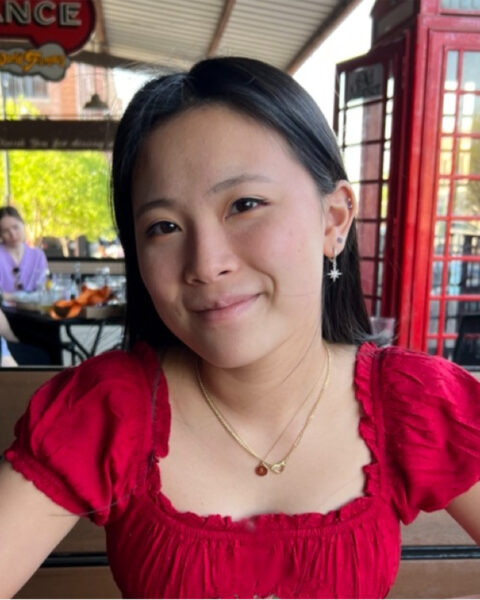 Samantha Balaban COS’26, “Identification of Plant-Growth-Promoting Bacteria Originating from the Atacama Desert”
Samantha Balaban COS’26, “Identification of Plant-Growth-Promoting Bacteria Originating from the Atacama Desert”
Mentor: Professor Yunrong Chai, COS, Biology
Expansive use of chemical pesticides threatens food security and causes mass desertification. Plant-growth-promoting bacteria are soil bacteria that associate with plant roots and can stimulate growth. This project aims to identify bacteria isolated from the Atacama Desert that allow desert plants to grow in the presence of high salt. We will use cucumbers and subgroups of desert bacteria grown in saline soil. 16s microbiome sequencing will be used to identify which bacteria the plants recruit to aid in salt response by comparing the relative concentration of helpful bacteria in salt conditions.
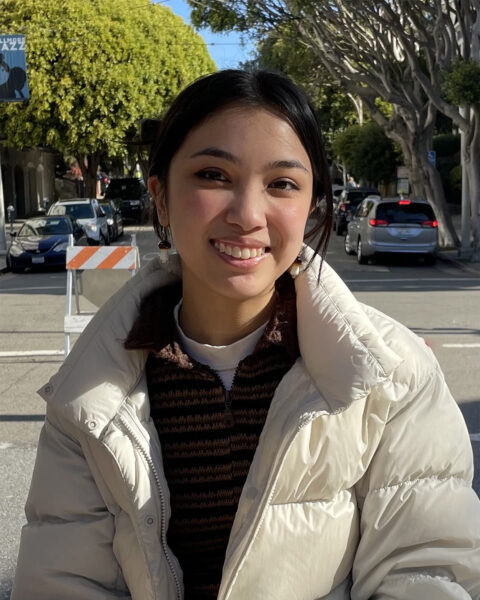 Sabrina Balmaseda Bouvé’25, “Review of Population Demographics in Human Studies on Per and Polyfluoroalkyl Substances (PFAS) and Reproductive System Outcomes”
Sabrina Balmaseda Bouvé’25, “Review of Population Demographics in Human Studies on Per and Polyfluoroalkyl Substances (PFAS) and Reproductive System Outcomes”
Mentor: Professor Julia Varshavsky, Bouvé, Health Sciences
This research summarizes reporting on racial and/or ethnic subgroups from US studies on PFAS and reproductive system outcomes. Studies were exported from the PFAS-Tox Database to Excel. Articles were screened for population demographics. Descriptive statistics will be calculated for subgroups from US and California studies, and compared to 2010 Census data. A nonparametric statistical test will then be conducted. Findings will summarize which subgroups are overlooked, enabling future research to be more inclusive of BIPOC populations. Based on these findings, I will submit a paper to a scientific journal, and an abstract and presentation to present at a scientific conference.
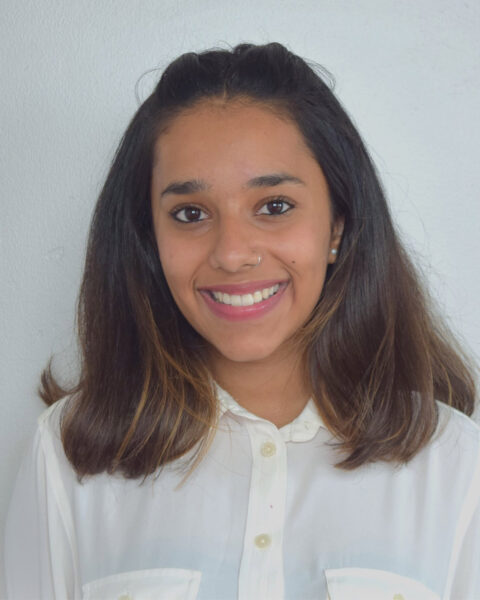 Dhwani Bhatt COE’26, “Investigating the Biochemical Methane Potential of an Organic Waste Substrate for a Clean Energy Biogas Project in Rural Uganda”
Dhwani Bhatt COE’26, “Investigating the Biochemical Methane Potential of an Organic Waste Substrate for a Clean Energy Biogas Project in Rural Uganda”
Mentor: Professor Annalisa Onnis-Hayden, COE, Civil & Environmental Engineer
This research aims to determine the biochemical methane potential of a specific organic waste substrate using a respirometer sensor method to determine its theoretical methane yield and assess its potential as feedstock for a biodigester. The study will be conducted within the context of a rural Ugandan school by calculating the theoretical methane yield of the school’s organic waste to aid in the technical designing of a biodigester system for the school. Results will contribute to the implementation of a desperately needed clean energy biogas system in a rural school to replace current unsustainable sources of firewood and diesel generators.
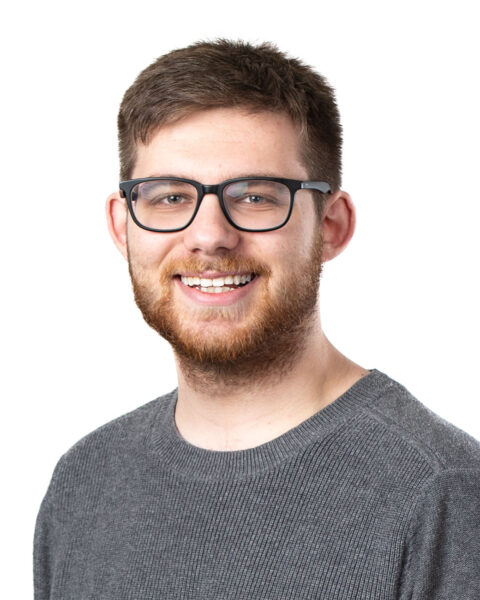 Dylan Black CSSH’25, “Prevention Based Drug Policies on Opioids and Intimate Partner Violence”
Dylan Black CSSH’25, “Prevention Based Drug Policies on Opioids and Intimate Partner Violence”
Mentor: Professor Bilge Erten, CSSH, Economics
Intimate partner violence (IPV) poses a pervasive public health issue, leading to several adverse consequences on the physical and mental well-being of both victims and their families. Our research investigates the relationship between IPV and the opioid crisis, a relationship that has not been explored before. While substance abuse at large has been the focus of prior research, opioids themselves have not. We investigate two preventative programs for opioids, Prescription Drug Monitoring Programs (PDMPs) and the reformulation of OxyContin™, to understand their impacts on IPV and possible spillover effects. This will shed light on the societal impacts of supply-side interventions.
 Linden Burack COS’26, “In-Silico Genome Architecture Mapping”
Linden Burack COS’26, “In-Silico Genome Architecture Mapping”
Mentor: Professor Michele Di Pierro, COS, Physics
How our cells package two meters of DNA into microscopic nuclei is of extreme epigenetic importance; we are only now developing the techniques to understand it. Genome Architecture mapping (GAM) is quickly becoming the assay of choice for chromatin structure. This fall I will work under the mentorship of Dr. Bernardo Herrera at the Di Pierro Lab to develop an in-silico simulation of GAM, providing insight into how various parameters affect the quality of the assay’s output, and potentially informing improvements to the protocol.
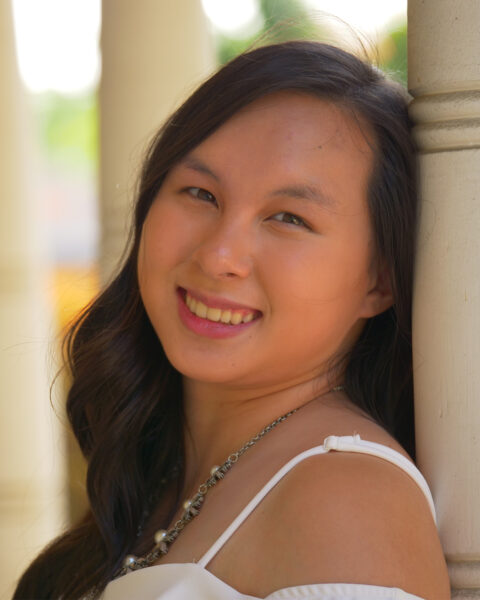
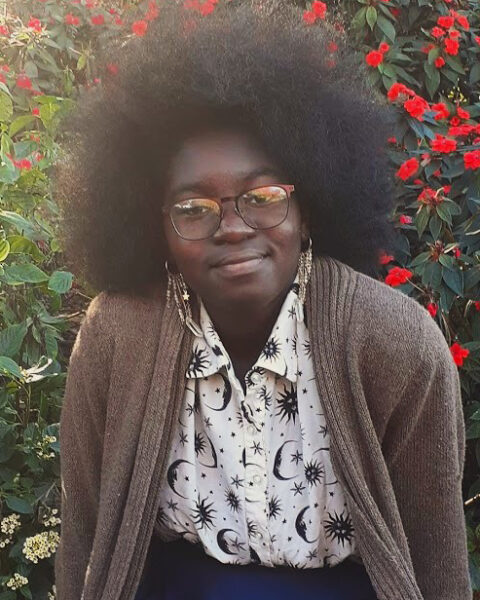 Alyssa Chen Khoury’26 & Suubi Magoola CAMD’27 “A New Domain”
Alyssa Chen Khoury’26 & Suubi Magoola CAMD’27 “A New Domain”
Mentor: Professor Luke Landherr, COE, Chemical Engineering
Despite billions of dollars being poured into diversity measures in the tech industry, numerous marginalized communities remain starkly underrepresented in tech. A New Domain is an educational visual novel that sets out to encourage and empower youth of marginalized identity to explore Computer Science. Featuring a curriculum inspired by Northeastern’s Fundamentals of Computer Science I & II and Discrete Structures courses, this video game will teach the tenants of Computer Science in an accessible, engaging manner. At the end of the semester, the demo will be released, featuring the first three chapters of the game.
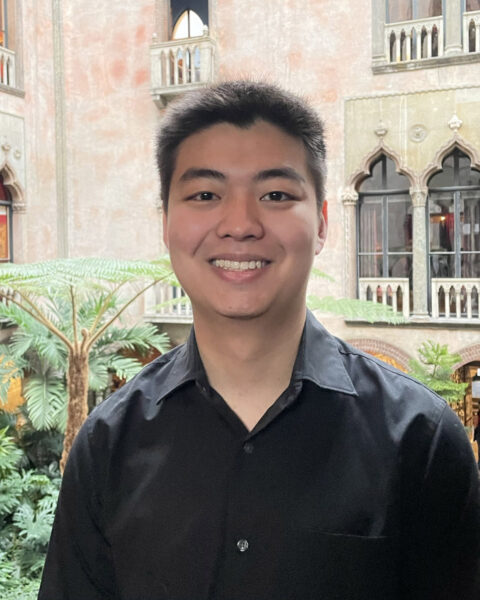
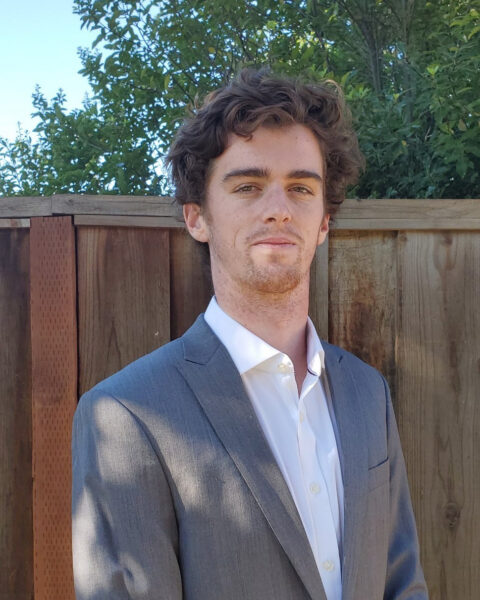 Joshua Cheng COE’24 & Thomas Davies COE’24, “Building an Autonomous Surface Vehicle to Lower the Barrier to Entry for Marine Research”
Joshua Cheng COE’24 & Thomas Davies COE’24, “Building an Autonomous Surface Vehicle to Lower the Barrier to Entry for Marine Research”
Mentor: Professor Thomas Consi, COE, Electrical and Comp Engineering
For much of its existence, marine research conducted by autonomous vehicles has had an incredibly high barrier to entry. Vehicles were bulky, and were often extremely expensive. Recently, efforts have been made to decrease the price of research in the marine field with the Jetyak from Woods Hole Oceanographic Institute. Our goal is to take this even further, and build a motorized dual-pontoon autonomous craft designed to further lower the barrier to entry for autonomous marine research. The dual pontoon design will allow for larger sensor payloads to be attached to the craft, and make for easier steering.
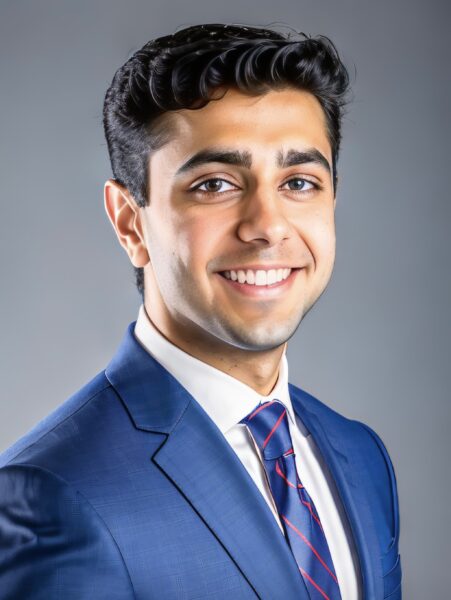 Rohan Chopra Khoury’26, “The Biology of Trauma and Resilience Initiative at the Broad Institute of MIT and Harvard”
Rohan Chopra Khoury’26, “The Biology of Trauma and Resilience Initiative at the Broad Institute of MIT and Harvard”
Mentor: Professor Alisa Lincoln, CSSH, Sociology and Anthropology
Although much is known about the effects of trauma, little is known about the biological mechanisms and pathways it impacts. We seek to understand the mechanisms by which trauma, occurring over the life course, but especially in childhood, gets under the skin of patients and shapes how they think, feel, and behave, often for the remainder of their lives. Using insights into cognitive mechanisms and other bodily systems that have been associated with the damage wrought by trauma, we hope to develop objective measures and effective interventions to ameliorate suffering and increase resilience while uncovering the biological underpinnings of trauma.
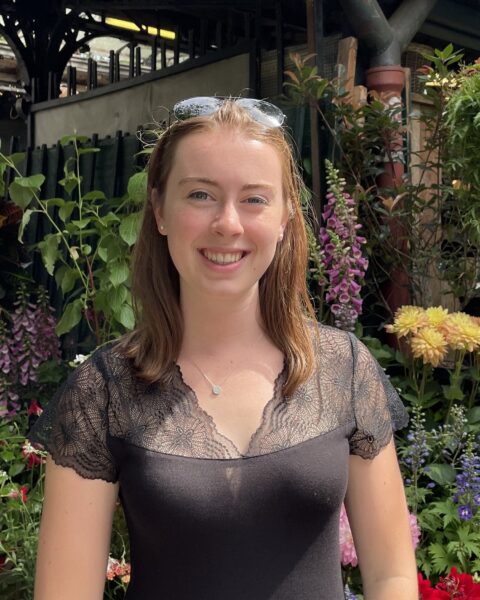 Julia Colbert COS’25, “Developing a Probiotic Product that Breaks Down Psychoactive Drug GHB Using Engineered Bacillus subtilis.”
Julia Colbert COS’25, “Developing a Probiotic Product that Breaks Down Psychoactive Drug GHB Using Engineered Bacillus subtilis.”
Mentor: Professor Yunrong Chai, COS, Biology
I hope to create a genetically modified strain of Bacillus subtilis that will overproduce enzymes to break down harmful psychoactive drugs. Kinetics tests will then be used to determine how fast these products can be broken down by our strains in various acidic solutions. The goal is that the probiotic will curb the side effects of date rape drugs over an extended period of time and protect the user.
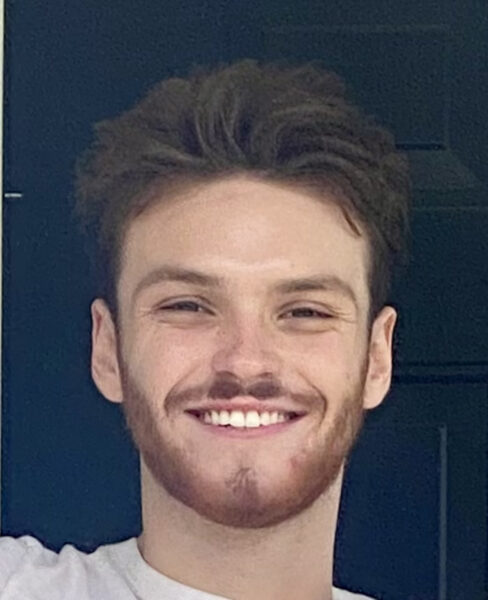 Joe Desroches COS’24, “Using Symmetry to Reduce Electronic Hamiltonian Complexity for Quantum Annealing”
Joe Desroches COS’24, “Using Symmetry to Reduce Electronic Hamiltonian Complexity for Quantum Annealing”
Mentor: Professor Sijia Dong, COS, Chemistry & Chemical Biology
Quantum computing offers revolutionary potential for quantum chemical calculations, impacting important fields like drug discovery and material science. This project centers on simplifying the electronic Hamiltonian, the mathematical description of a molecule’s electronic structure, using arguments based on the symmetry of molecular systems. This involves formulating mathematical equations, simulating chemical systems, and validating accuracy on contemporary adiabatic quantum computers, a major model of quantum computing. Anticipated outcomes encompass novel mathematical strategies and an open-source code repository. The significance of our findings will be shared via presentation and potential publication, fostering advancements in quantum chemistry and its interrelation with quantum computation.
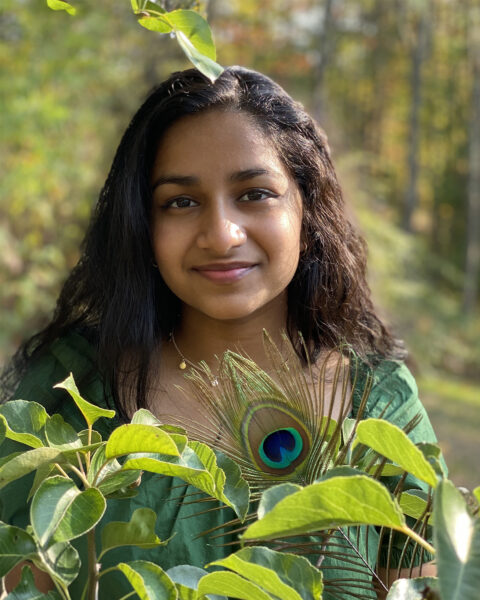 Reshika Sai Devarajan Bouvé’25, “Understanding the More Fun with Sisters and Brothers Program as an Intervention/Preventative Measure”
Reshika Sai Devarajan Bouvé’25, “Understanding the More Fun with Sisters and Brothers Program as an Intervention/Preventative Measure”
Mentor: Professor Laurie Kramer, Bouvé, Applied Psychology
Many parents turn to the More Fun with Sisters and Brothers Program for various reasons, whether to ensure their children maintain healthy bonds, or to fix and improve strained sibling relationships. This project seeks to understand the function of the More Fun with Sisters and Brothers program as a prevention versus intervention tool. By understanding which components of the program are most salient to parents with different goals through in-depth quantitative analysis, we can better understand how to shape future interventions to fit the diverse needs of families. The project will culminate in a RISE presentation and a potential publication.
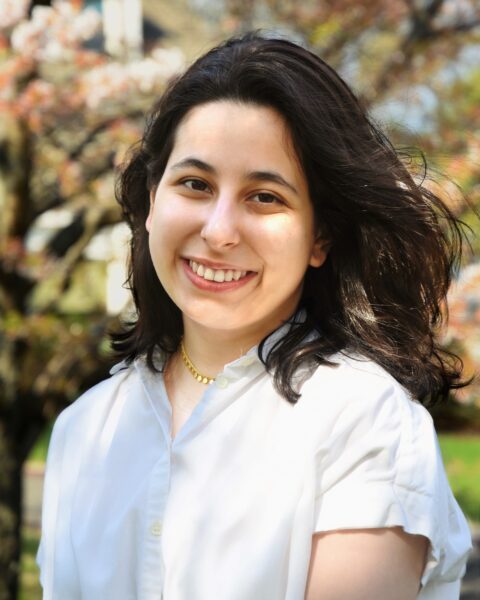 Eda Erdogmus COE’26, “Characterizing the Neuroprotective Mechanisms of Physical Activity to Mitigate Neurovascular Dysfunction in Alzheimer’s Disease”
Eda Erdogmus COE’26, “Characterizing the Neuroprotective Mechanisms of Physical Activity to Mitigate Neurovascular Dysfunction in Alzheimer’s Disease”
Mentor: Professor Abbas Yaseen, COE, Bioengineering
This project seeks to characterize brain metabolism and blood flow and the neuroprotector effects of physical exercise on Alzheimer’s Disease, as physical exercise has been shown to reduce much of the negative side effects of aging at the molecular level. As a continuation of an ongoing project, we will use molecular biology analysis such as Western Blot and Immunofluorescence alongside data acquired from advanced two-photon microscopy. We expect to find strong correlations between chronic forced physical exercise and preserved neuronal function, blood vessel density, reduced counts of damaged proteins, or oxygen extraction fraction, suggesting a conservation of key brain mechanisms.
 Amanda Ferrante COE’26, “Elucidating the Effects of Cholesterol on the Function of Surfactant Protein C Using Atomistic Molecular Dynamics”
Amanda Ferrante COE’26, “Elucidating the Effects of Cholesterol on the Function of Surfactant Protein C Using Atomistic Molecular Dynamics”
Mentor: Professor Mona Minkara, COE, Bioengineering
This study investigates the role of Surfactant Protein C (SP-C) in the pulmonary surfactant (PS) system – a complex lipid-protein system in lung alveoli essential for breathing. SP-C plays a crucial role in maintaining surface pressure and structure in the lungs, and recent findings suggest that SP-C may interact with cholesterol, altering membrane structure. Given the health significance of elevated cholesterol, using atomistic molecular dynamics to simulate systems of five different cholesterol concentrations to understand its impact on SP-C gives insight into how this mechanism functions with clinical applications in synthetic surfactant treatments. Findings will be shared at internal conferences.
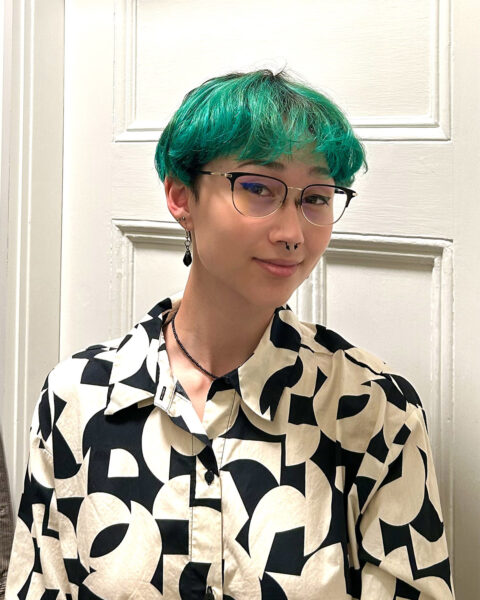 Hadley Frels COS’25, “Re-Examining the Role of Herbivory in Maintaining Algal Species Diversity of Rocky Shorelines in the Face of Biological Invasion and Warming Sea Temperatures”
Hadley Frels COS’25, “Re-Examining the Role of Herbivory in Maintaining Algal Species Diversity of Rocky Shorelines in the Face of Biological Invasion and Warming Sea Temperatures”
Mentor: Professor David Kimbro, COS, Marine & Environment Sciences
My project aims to re-examine tidepools in the rocky intertidal of Nahant, MA to see how the introduction of invasive species and climate change have affected the relationship between the herbivorous snails and algae that reside there. The project will consist of three parts: tidepool surveys of algae and snails, a laboratory experiment to test the snails’ algae preferences and a data analysis of the survey data. I will submit a manuscript for publication to the journal PlosOne, submit my survey data to the DRYAD repository and also present my findings at RISE.
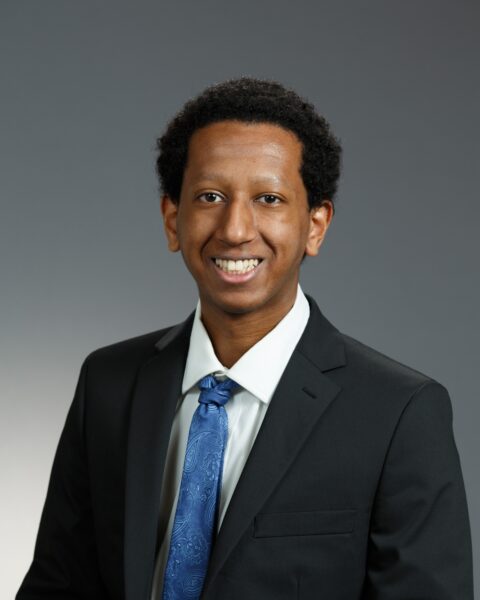 Eyob Gebeyaw COS’26, “Identifying Neurons Involved in the Chemotactic Avoidance Response to Hydrogen Peroxide in C. elegans”
Eyob Gebeyaw COS’26, “Identifying Neurons Involved in the Chemotactic Avoidance Response to Hydrogen Peroxide in C. elegans”
Mentor: Professor Javier Apfeld, COS, Biology
The induction of oxidative stress is one way environmental chemicals can reduce our lifespan and health span. Oxidative stress is associated with neurodegenerative diseases such as Alzheimer’s. Hydrogen peroxide, an oxidizer, is used in labs to model oxidative stress in animals. The roundworm Caenorhabditis elegans is useful for studying human-disease associated elements, including oxidative stress, due to the substantial homology between its genome and the human genome. I will use the gene-expression manipulation system cGAL to construct neuronal-silencing strains and assay them to identify neurons involved in the chemotactic avoidance response to hydrogen peroxide. I will present my results at RISE.
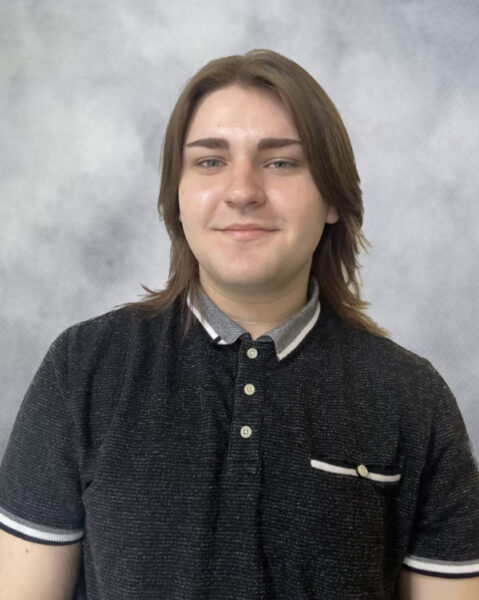 Alexander Kodak COS’26, “Synthesis and Characterization of a Novel Mixed-Metal Photocatalyst”
Alexander Kodak COS’26, “Synthesis and Characterization of a Novel Mixed-Metal Photocatalyst”
Mentor: Professor Hannah Sayre, COS, Chemistry & Chemical Biology
The research project will be focusing on developing a novel complex that will show photocatalytic activity. The proposed complex will consist of three ruthenium centers and two platinum centers that are able to enhance photophysical properties previously studied. This photocatalyst will contribute to a growing collection of multimetallic complexes that when shined with lower energy red light have the potential to sustainably power pharmaceutical reactions, hydrogen fuel production, and other important redox reactions.
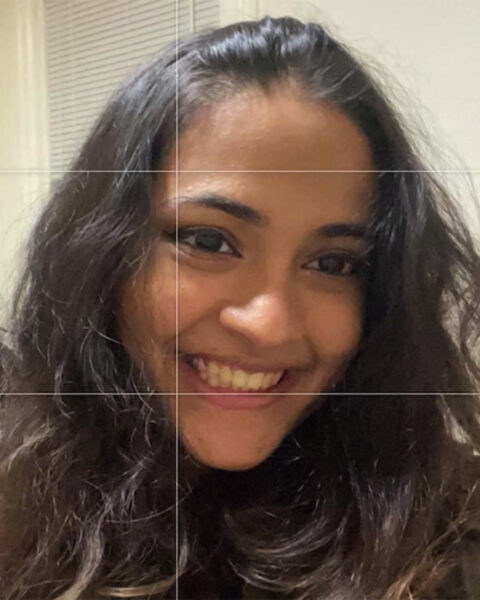 Tanishka Kucheria COE’24, “Enhancing Direct Air Capture Efficiency: Integration of Taylor Flow in Microchannel Electrochemical Systems”
Tanishka Kucheria COE’24, “Enhancing Direct Air Capture Efficiency: Integration of Taylor Flow in Microchannel Electrochemical Systems”
Mentor: Professor Magda Barecka, COE, Chemical Engineering
This research aims to revolutionize Direct Air Capture (DAC) systems by integrating Taylor flow to address mass transfer limitations, a significant hurdle in current DAC systems. This project promises enhanced efficiency and longevity by employing an innovative Taylor-flow system with closely spaced electrodes, leading to cost-effective CO2 capture. Methods include utilizing a novel microchannel flow cell and testing for optimum gas separation under varied conditions. Successful validation of this approach would be a significant step toward combatting climate change. Results will be disseminated through academic channels and publicity materials, with hopes of influencing future research and industry applications.
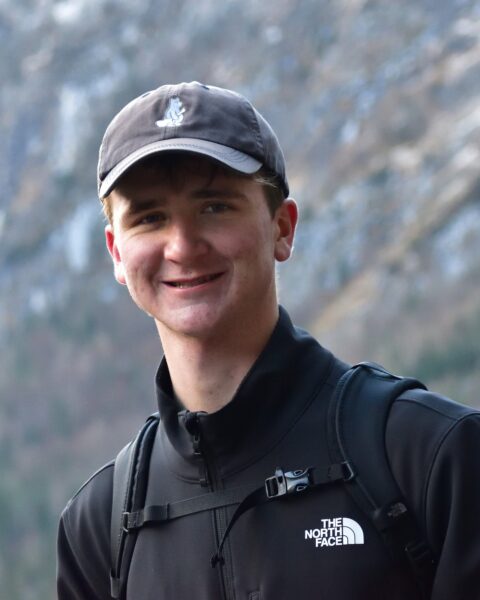 Charlie Lange COE’26, “Development of Visual Models of Quantum-Spin Properties to Aid Undergraduate Learning”
Charlie Lange COE’26, “Development of Visual Models of Quantum-Spin Properties to Aid Undergraduate Learning”
Mentor: Professor Camille Gomez-Laberge, COS, Physics
The purpose of this project is to develop visual methods for representing the abstract, mathematical concept of relativistic, quantum spin in theoretical particle physics. This project seeks to utilize projective geometry and topological methods to express the behaviors of particle spin based on the manipulation of its internal properties. The goal is to produce a mathematically accurate exhibit that helps students understand particle spin concepts without requiring an understanding of the underlying equations.
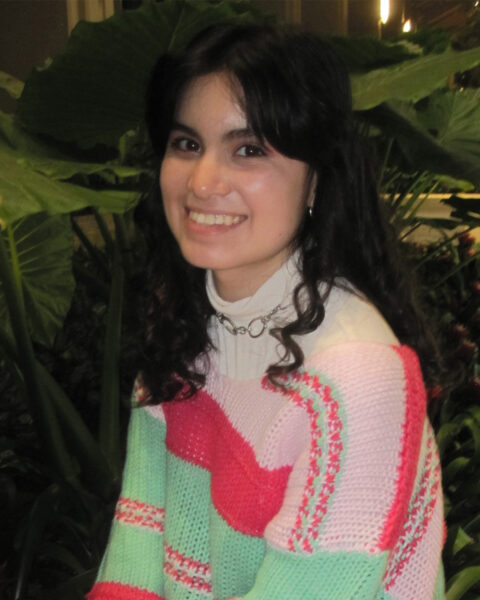 Carolina Larracilla CSSH’26, “Mapping the Connections Between New England and the Caribbean”
Carolina Larracilla CSSH’26, “Mapping the Connections Between New England and the Caribbean”
Mentor: Professor Elizabeth Dillon, CSSH, English
I am researching and documenting the movements of Samuel Parris and the (likely) Arawak enslaved woman, Tituba, key figures in the Salem Witch Trials. This project maps the connections between New England and the Caribbean to show how enslaved African and Indigenous American people shaped the Atlantic world.
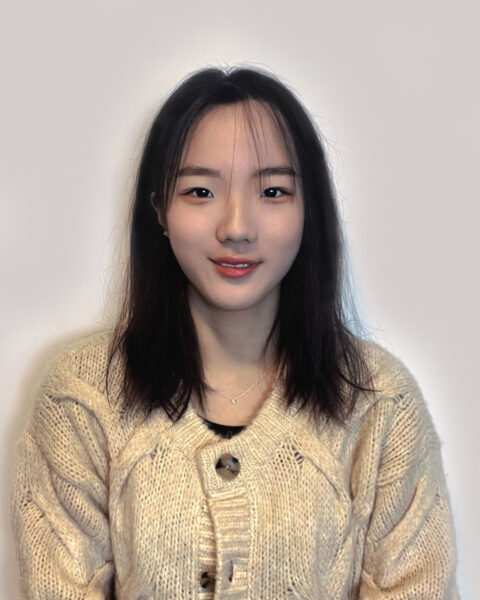
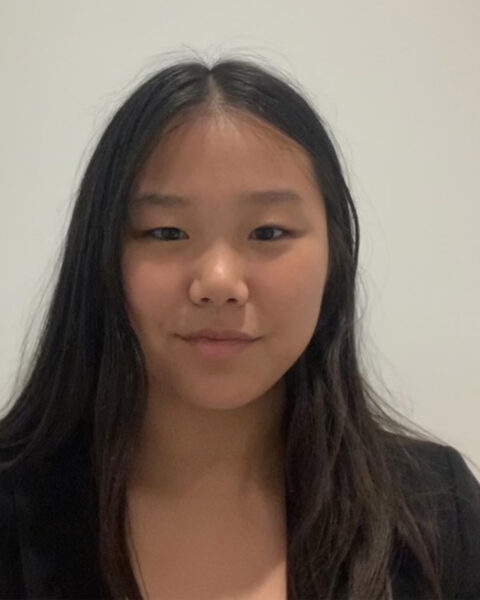
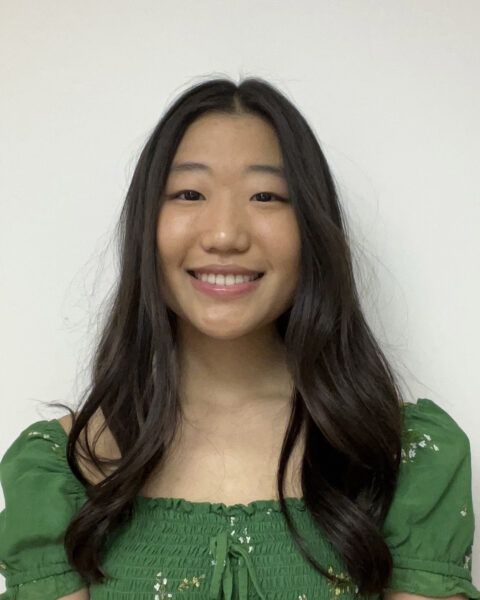 Yeongju Lee Bouvé’25, Chloe Chung COS’26, Grace Zhao COE’26, “Liquid Droplet Impact on Hydrophilic Powderbed”
Yeongju Lee Bouvé’25, Chloe Chung COS’26, Grace Zhao COE’26, “Liquid Droplet Impact on Hydrophilic Powderbed”
Mentor: Professor Xiaoyu Tang, COE, Mech & Industrial Engineering
We aim to gain a comprehensive understanding of the impact of liquid droplets on powder beds, specifically on hydrophilic powder-bed through analyzing crater morphologies and penetration time through high-speed cameras. This research addresses a gap in knowledge regarding droplet-powder interactions, particularly in the application of 3D printing in the pharmaceutical industry. The findings have potential applications in optimizing printing parameters, enhancing print quality, and developing new materials for diverse applications. We are looking forward to finding the relationships between parameters including viscosity, impact speed, and cohesiveness of particles, and how it impacts the fluid dynamics of physics.
 Jethro Ronald Lee Khoury’25, “A Novel Machine Learning Analysis of Success Probabilities in Field Hockey”
Jethro Ronald Lee Khoury’25, “A Novel Machine Learning Analysis of Success Probabilities in Field Hockey”
Mentor: Professor Eric Gerber, Khoury, Data Science
Field hockey is a sport that has been overlooked in academia. Hence, we will spearhead the creation of machine-learning model(s) that better inform decisions on the hockey field. We will investigate the use of bivariate binomial distribution and decision tree models to predict success probabilities related to field hockey outcomes to better evaluate team and player performance. We will assess how players contribute to field hockey matches by investigating events such as face-offs and assists, and evaluating the on-field value of these events concerning a team s winning chances. Our results will be shared at RISE and other sports analytics conferences.
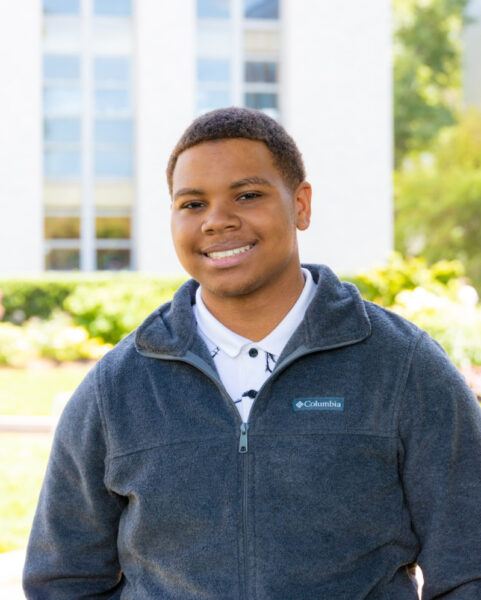 Donte Lewis COS’27, “Neurobiological Substrates Underlying Persistent Discriminative Stimulus-Controlled Cocaine Seeking during Abstinence”
Donte Lewis COS’27, “Neurobiological Substrates Underlying Persistent Discriminative Stimulus-Controlled Cocaine Seeking during Abstinence”
Mentor: Professor Craig Ferris, COS, Psychology
More than 85% of people with substance use disorders who abstain from drug use relapse within a year. In fact, the relapse-provoking ability of drug cues persists long after cessation of drug use. Interventions that suppress persistent drug-cue memories could be key to preventing relapse. The goal of the proposed studies is to investigate brain-wide activation patterns that underlie persistent Discriminative Stimuli(DS) -controlled drug-seeking behavior. I will present my results at RISE and will submit an abstract for the 2024 Society for Neuroscience Annual Meeting.
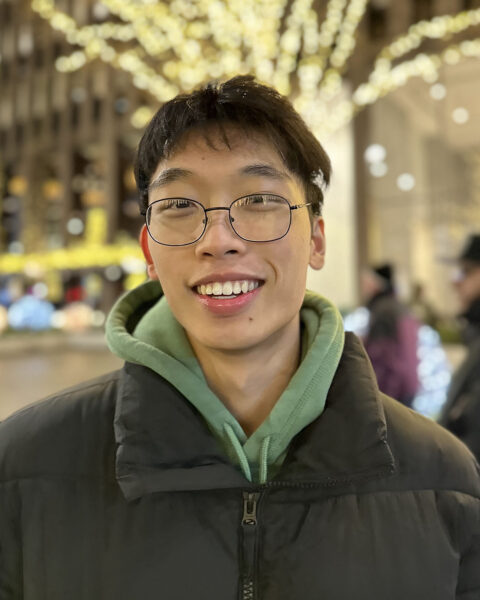 Brady Li CPS’25, “Virtual Reality Cybersickness Study”
Brady Li CPS’25, “Virtual Reality Cybersickness Study”
Mentor: Professor Wallace Lages, CAMD, Art and Design
One of the major barriers to entry into virtual reality is cybersickness, a form of motion sickness resulting from VR and AR experiences. With a VR roller coaster simulation, my project intends to study the possible relationship between a cognitive style called field dependence and cybersickness while looking at the user’s eye movement. If we find correlations between the three, we may be able to predict cybersickness by analyzing how a user looks at a scene. Exploring such ideas is imperative to creating more comfortable VR experiences for the general public and the growth of the field as a collective.
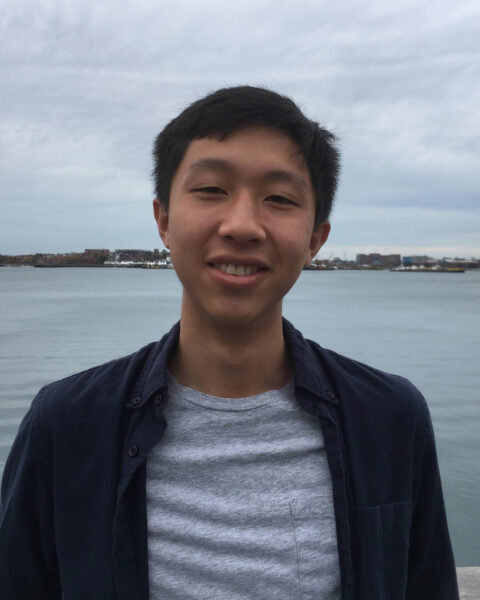 Der Chi Lin COE’25, “Data Collection Pipeline for Practical Applications of Generative Design”
Der Chi Lin COE’25, “Data Collection Pipeline for Practical Applications of Generative Design”
Mentor: Professor Thomas Consi, COE, Electrical and Computer Engineering
The allure of generative design is more apparent than ever with the introduction of ChatGPT-3 and there has been considerable speculation into its applications in engineering. Autodesk has been pursuing this with features in Fusion360 that have been released over the course of the last couple years though there is little industry adoption due to the difficulty in collecting reliable data to input into the algorithms. This project seeks to create a generalized data collection pipeline for use in generatively designed geometry with a keystone application in custom midsole designs that address orthopedic needs at an individual basis.
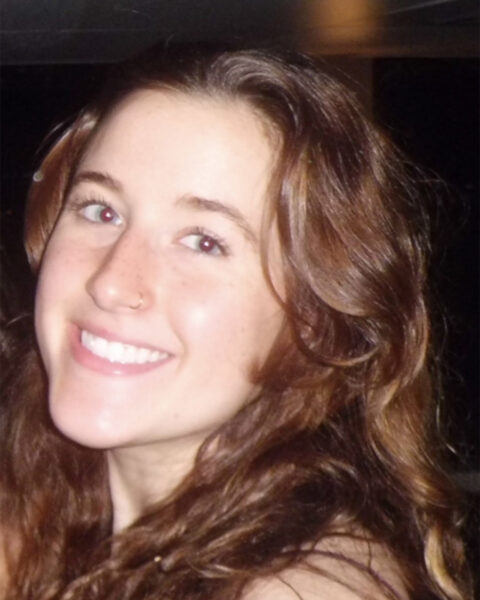 Audrey Lynch COS’25, “Investigating the Effects of Early Life Adversity on Prosocial Behavior and Neural Circuitry”
Audrey Lynch COS’25, “Investigating the Effects of Early Life Adversity on Prosocial Behavior and Neural Circuitry”
Mentor: Professor Heather Brenhouse, COS, Psychology
Early life adversity (ELA) is the early exposure to negative experiences including war, malnourishment, and neglectful parenting. This project explores how ELA affects prosocial behavior and oxytocin pathways. During investigation, rats experience maternal separation (MS), and then their behavior and oxytocin pathways are observed during a helping behavior test. I hypothesize that if ELA hinders prosocial behavior via oxytocin pathways, then MS rats will display decreased prosocial behavior and lower oxytocin-pathway activity. Results will be presented at 2024 RISE and 2024 SFN conference. Ultimately, these studies can help treat psychiatric disabilities that are attributable to ELA and hinder social cognition.
 Chloe Mak COS’26, “A Placed-Based Initiative: The Sacramento ACEs Project”
Chloe Mak COS’26, “A Placed-Based Initiative: The Sacramento ACEs Project”
Mentor: Professor Alisa Lincoln, CSSH, Sociology and Anthropology
The ACE Research Network (ARN) is a philanthropic organization, aiming to develop a PSA approach to raise awareness and create intervention and prevention methods on Adverse Childhood Experiences (ACEs). The ACEs research project focuses specifically on the negative health and social impacts of ACEs on the Sacramento, CA, area. My research has involved qualitative analysis and quantitative coding work based on collected survey data. I plan to continue my research by contributing to a manuscript that would be submitted for publication in the journal Child Maltreatment . Additionally, I plan to share my results at the 2024 RISE Expo.
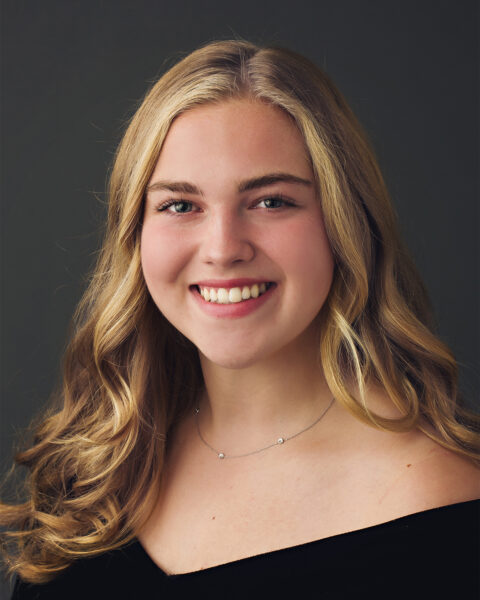 Lily Miles COE’26, “Underwater Li-Fi Communication”
Lily Miles COE’26, “Underwater Li-Fi Communication”
Mentor: Professor Thomas Consi, COE, Electrical and Comp Engineering
Standard wireless communication methods like Bluetooth and Wi-Fi are unsuitable for underwater applications due to waters signal attenuation of radio waves. Consequently, underwater robotics relies on tethers for data transmission. Acoustic communication, while an option, is slow and energy-intensive. Light fidelity (Li-Fi) technology stands out: it transmits well underwater, with high data rates and low energy demands. This project introduces independent waterproof modules—a transmitter and a receiver—for pulse width modulation (PWM) and data communication. These modules Bridge surface control centers and remotely operated vehicles (ROVs), potentially replacing tethers and granting ROVs new found mobility and versatility.
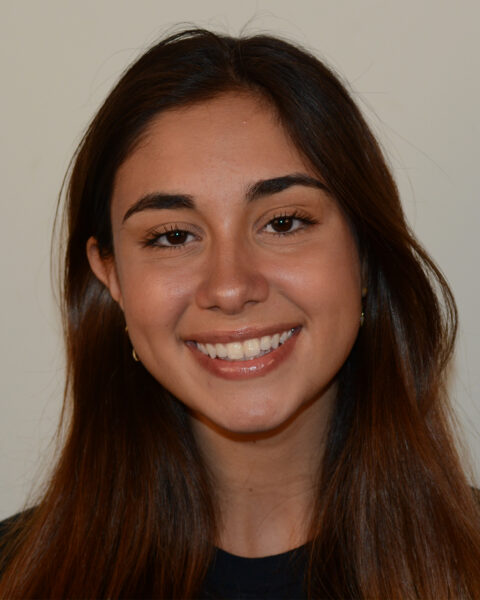 Emma Nace COS’26, “The Influence of GCY on Neuronal Regeneration in C. elegans”
Emma Nace COS’26, “The Influence of GCY on Neuronal Regeneration in C. elegans”
Mentor: Professor Samuel Chung, COE, Bioengineering
By studying lesion conditioning, which activates regenerative capacity, I aim to uncover how signals like cGMP influence gene expression to promote regeneration. Focusing on daf-11, a gene involved in cGMP production, I will create mutant worms and conduct laser surgeries on their neurons in order to understand how crh-1, which drives conditioning, and downstream signaling is affected by a daf-11 knockout. This 10-week project involves genetic analysis, laser surgery, and imaging. Successful outcomes may unveil novel insights into nerve regeneration in a mammalian model. I plan to share my results at future research conferences, including RISE in the Spring.
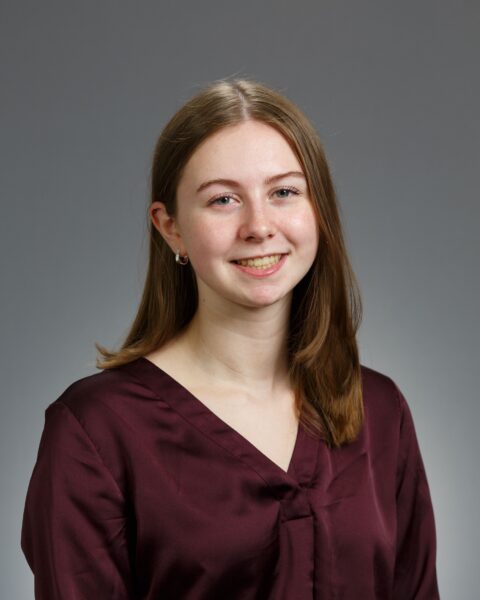
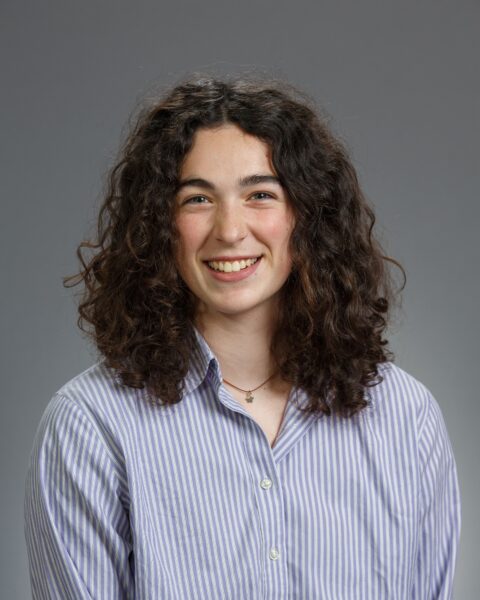 Katherine O’Brien Bouvé’24 & Julia Papasadoro Bouvé’24, “The Link Between HIV, Climate Change, and Sexual Minority Populations: A Scoping Review.”
Katherine O’Brien Bouvé’24 & Julia Papasadoro Bouvé’24, “The Link Between HIV, Climate Change, and Sexual Minority Populations: A Scoping Review.”
Mentor: Professor John Olawepo, Bouvé, Health Sciences
This project seeks to identify the links through existing research linking HIV, climate change, and sexual minority populations. Health equity is threatened by the looming climate emergency, and research has already identified frameworks for how HIV/AIDS will be impacted. However, there is limited work connecting HIV and climate change in the context of health disparities and sexual minority populations. We are undertaking a scoping review of the literature and will employ qualitative and quantitative data analysis methods, and anticipate to be able to understand how these three factors will interact, sharing our work through publication and conference presentations.

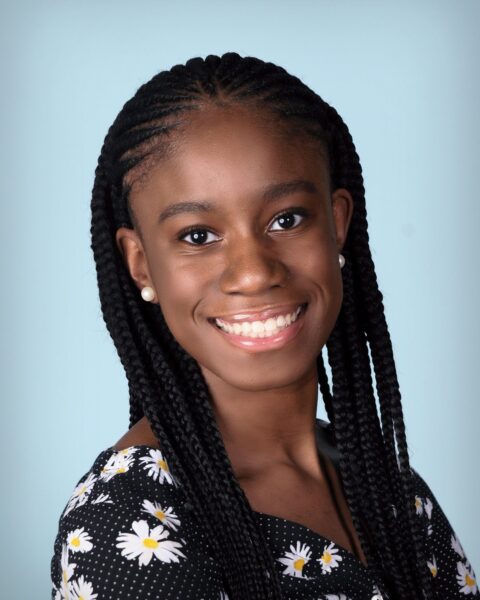 Ise Okhiria Khoury’25 & Alyssa Lee COS’25, “Search for Predictive Bipolar Biomarkers”
Ise Okhiria Khoury’25 & Alyssa Lee COS’25, “Search for Predictive Bipolar Biomarkers”
Mentor: Professor Fatemeh Ghoreishi, COE, Civil & Environmental Engineer
This project will investigate biomarkers of treatment outcomes for those with bipolar disorder. Biomarkers are biological indicators of how a disease is progressing through their body. Psychiatric biomarkers include genetics markers, brain structure, and protein levels in the body. Investigating these biomarkers of treatment outcomes will be achieved by creating a ML model. The model will be helpful in predicting which outcome treatments are linked to certain biomarkers. We aim to create a model that is the most accurate at predicting these outcomes. Improvement of predictive biomarkers can inform which treatment is best for each individual with bipolar disorder
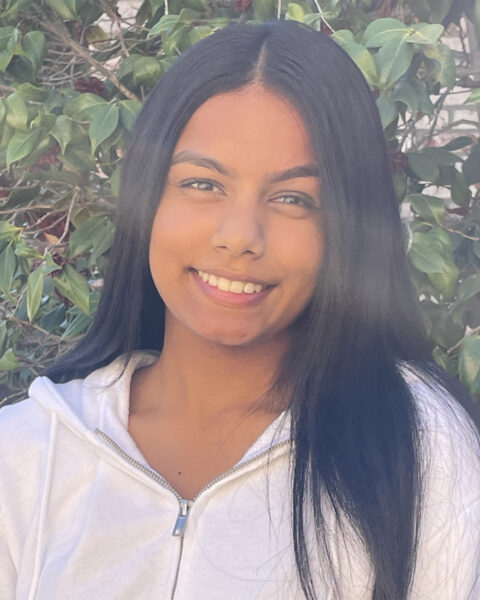 Priya Palaniappan Bouvé’24, “Impact of Community- and Incentive-Based Approaches on the Demand for Sickle Cell Disease Newborn Screening in Nigeria: A Pilot Study”
Priya Palaniappan Bouvé’24, “Impact of Community- and Incentive-Based Approaches on the Demand for Sickle Cell Disease Newborn Screening in Nigeria: A Pilot Study”
Mentor: Professor John Olawepo, Bouvé, Health Sciences
In Nigeria, the estimated average mortality rate for children under the age of 5 born with sickle cell disease is 490 per 1000 live births. While national sickle cell disease control programs have been developed, screening rates continue to remain low in Nigeria due to disparities, including high costs and inequitable access. Community-based screening programs and financial incentives are more promising methods of increasing demand for newborn screening. This project aims to further explore these methods to promote early diagnosis and care, consequently contributing to reduced morbidity and mortality rates among children born with sickle cell disease.
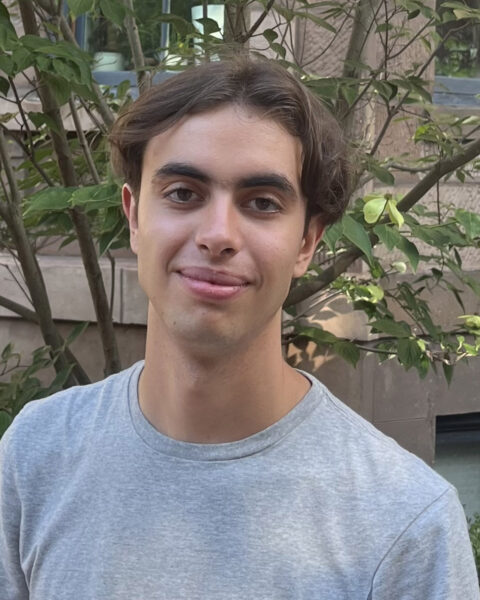 Daniel Pitsch COE’24, “Analyzing Publishing Advances to Forecast Book Sales”
Daniel Pitsch COE’24, “Analyzing Publishing Advances to Forecast Book Sales”
Mentor: Professor Yakov Bart, DMSB, Marketing
The book publishing industry’s selection and promotion processes, especially among large houses, are known to be opaque. Gauging how successful a book will be in the market has been difficult, both for publishers and outside observers This project looks to improve upon the existing, industry-standard predictions of success by building a model to forecast the sales of a book using publicly available advance deal data. The proposed research will culminate in a written report and presentation at RISE detailing all work done over the award period, as well as results on the model’s creation and effectiveness.
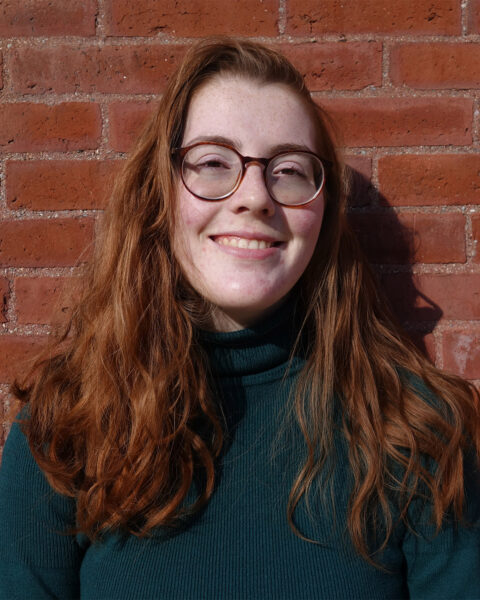 Julia Rasmussen COE’26, “Mobile Musical AI”
Julia Rasmussen COE’26, “Mobile Musical AI”
Mentor: Professor Victor Zappi, CAMD, Music
This project will integrate two music AI models into an open-source framework that allows developers to turn Android phones into fully functional music devices. This helps democratize the field of music technology – embedded devices are often expensive, whereas Android phones are commonplace around the world. The incorporation of AI models into this framework gives developers access to novel technology. Two music models will be redesigned with documentation written about the models’ training, allowing users to adjust any parameters when training models of their own. We plan to share the results at RISE and the Sound and Music Computing Conference.
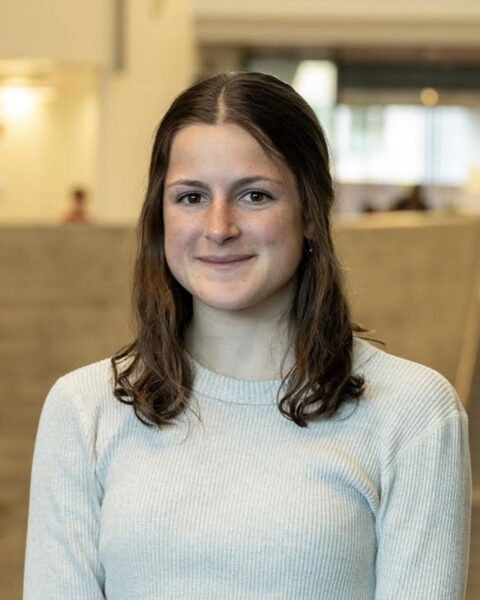 Isabella Ratto CSSH’25, “A Study of the Effects of Vertical Integration on Perceived Patient Care Experience”
Isabella Ratto CSSH’25, “A Study of the Effects of Vertical Integration on Perceived Patient Care Experience”
Mentor: Professor Brady Post, Bouvé, Health Sciences
We wish to explore the effect that the vertical integration of physicians, a type of healthcare consolidation, has on United States patients. We will examine the impact of this phenomenon on various aspects of their reported experience. In the existing body of vertical integration-focused work, none has emerged that explores patient experience. Our empirical research study will use two Medicare patient datasets to create a least square regression model, estimating different reported care experiences between integrated and non-integrated populations. We aim to share our results with policy and healthcare organizations as well as to submit a paper for journal publication.
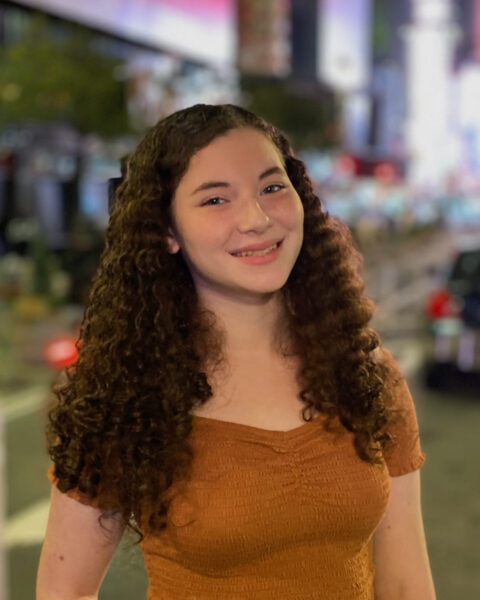 Daisy Roberts COE’25, “Carbon Dioxide Electrolysis at Polymerized Cuprous Oxide Cathodes”
Daisy Roberts COE’25, “Carbon Dioxide Electrolysis at Polymerized Cuprous Oxide Cathodes”
Mentor: Professor Magda Barecka, COE, Chemical Engineering
CO2 electrolysis is a field of sustainability research that involves using an electrolytic cell to reduce carbon dioxide back into useful hydrocarbons like methane and ethylene, essentially developing a way for natural gas to become “renewable”. My project intends to maximize ethylene production through CO2 electrolysis by combining two research-supported compositions of cathode in the electrolytic cell: the incorporation of a polymer into a copper oxide cathode. I anticipate the ethylene efficiency of my developed cathode to be higher than the stated methods used on their own and plan to explore three different cuprous oxide cathodes to be polymerized.
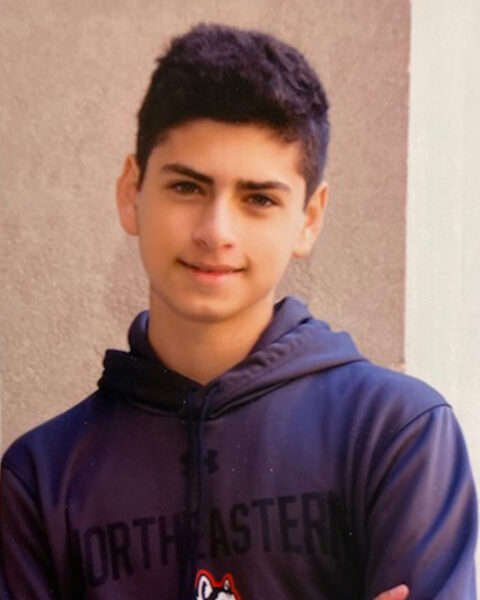 Eli Sandler Khoury’26, “Machine Learning with High Variance”
Eli Sandler Khoury’26, “Machine Learning with High Variance”
Mentor: Professor Rory Smead, CSSH, Philosophy and Religion
Machine learning algorithms are very reliant on the amount of data that is available. However, in many cases, there’s plenty of data, but the algorithms don’t work because the variance of results is too high. The purpose of this project is to create a machine learning method that is good at predictive modeling for cases with high variance, using fantasy sports as a case study. The goal is to beat the professionals at Fantasy Premier League (FPL) to show that machine learning can be useful in high variance contexts.
 Jasminder Sarkaria Bouvé’25, “Sacramento Aces Project: A Place Based Initiative”
Jasminder Sarkaria Bouvé’25, “Sacramento Aces Project: A Place Based Initiative”
Mentor: Professor Alisa Lincoln, CSSH, Health Sciences
The Sacramento ACEs Project is a place-based initiative with a purpose of raising awareness, preventing, and intervening on the association between Adverse Childhood Experiences (ACEs) and negative health and social outcomes in Sacramento, CA. ACEs are potentially traumatic events that occur during childhood and include violence, abuse, substance abuse and other traumatic events. Studying ACEs may help prevent conditions later in life such as depression, asthma, cancer, and diabetes. I will specifically be working on framing the introduction of the paper by conducting a research paper.
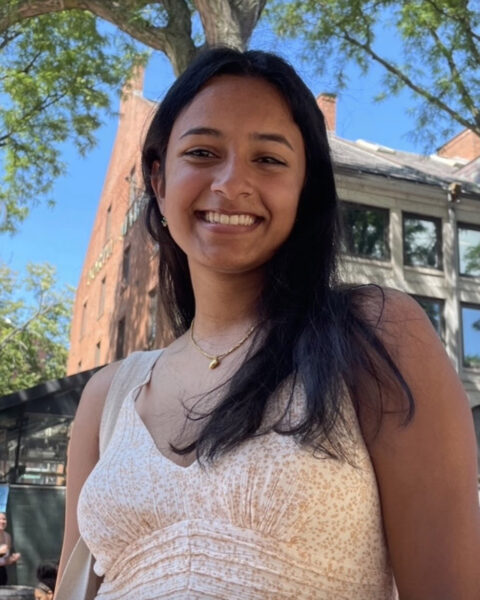 Trisha Shenoy CPS’-, “Mutational Analysis of a Critical Cell Division Protein in Acinetobacter baumannii”
Trisha Shenoy CPS’-, “Mutational Analysis of a Critical Cell Division Protein in Acinetobacter baumannii”
Mentor: Professor Edward Geisinger, COS, Biology
As a multidrug resistant pathogen, Acinetobacter baumannii has been identified by the CDC as an urgent threat due to the immense risk it poses to vulnerable patients in hospitals. As a result, there is a pressing demand to find new drug targets within the bacteria to combat infection. One potential target is a protein, AdvA, found in A. baumannii which is essential for cell division. Its function is poorly understood, however. I will address this problem by altering parts of the protein through mutations and examining effects on bacterial division and replication. I intend to share my results at RISE.
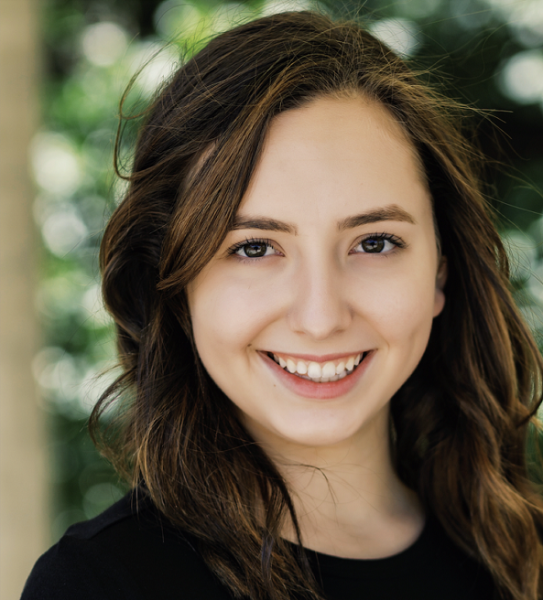 Joselyn Slobodow Bouvé’24, “Exploring Experiences of Online Supports in Psoriasis”
Joselyn Slobodow Bouvé’24, “Exploring Experiences of Online Supports in Psoriasis”
Mentor: Professor Rachel Rodgers, Bouvé, Applied Psychology
The research seeks to explore the correlation between psoriasis visibility, utilization of online support resources, and the impact on the mental well-being of patients. The objective is to conduct a survey targeting individuals with psoriasis who have previously or are currently participating in online support programs. The survey will encompass a body surface area (BSA) scale, Patient Health Questionnaire (PHQ-9), Generalized Anxiety Disorder Questionnaire (GAD-7), and Quality-of-Life Scale (QOLS). The goal of the project is to provide valuable insights for physicians and medical professionals on how to best adjust treatment and tailor support recommendations to the needs of psoriasis patients.
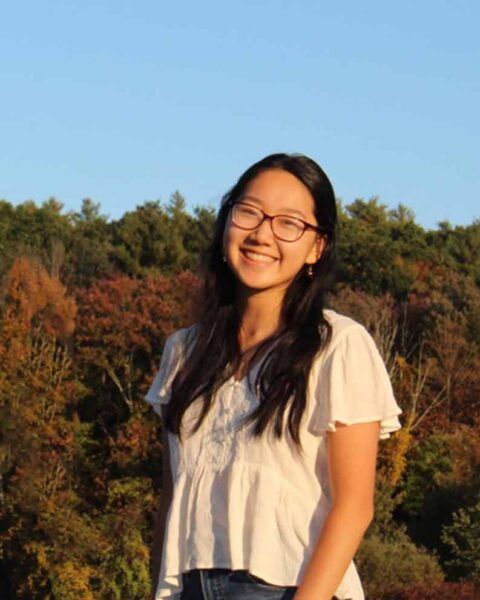 Emily Wu Bouvé’25, “Exploring the Mechanisms Behind Self-Regulated Extracellular Polysaccharide Production”
Emily Wu Bouvé’25, “Exploring the Mechanisms Behind Self-Regulated Extracellular Polysaccharide Production”
Mentor: Professor Yunrong Chai, COS, Biology
The primary sugar produced during biofilm formation in Bacillus subtilis is extracellular polysaccharides (EPS). This project focuses on further exploring the mechanisms of self-regulated EPS production. Previously conducted research shows that EpsA and EpsB of the EpsAB tyrosine kinase complex work together in a positive feedback loop to synthesize additional EPS. We aim to show His-tagged EpsB can be visualized using an SDS-PAGE gel that will separate the His-tagged EpsB from other proteins by molecular weight. We will also perform a surface plasmon resonance (SPR) assay to determine the cognate signal of EpsA that EPS binds to for biosynthesis.
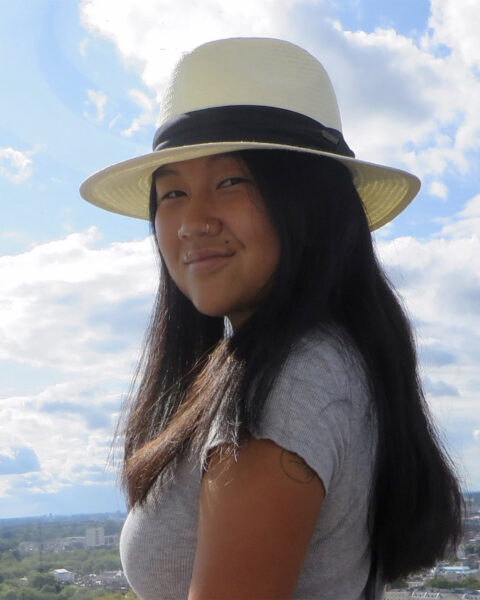 Jill Zerkowski COS’25, “Designing pH-responsive Double Network Hydrogels for Biomimetic Displays”
Jill Zerkowski COS’25, “Designing pH-responsive Double Network Hydrogels for Biomimetic Displays”
Mentor: Professor Dan Wilson, COS, Chemistry & Chemical Biology
Hydrogels, known for their water-absorbing capabilities, are gaining traction in material science. Traditional, single-network gels are brittle and excessive swelling causes degradation. However, double network (DN) hydrogels, composed of intertwined rigid and ductile networks, maintain flexibility throughout reversible swelling and deswelling. Being able to dynamically go between states emulates natural processes, such as muscle contractions. This project aims to formulate a DN-gel with optimized swell capacity and durability to be used in a display that mimics cephalopod’s chromatophores by changing size, shape, and color in response to environmental factors, like pH; results would be shared internally at RISE.
SUMMIT AWARDS
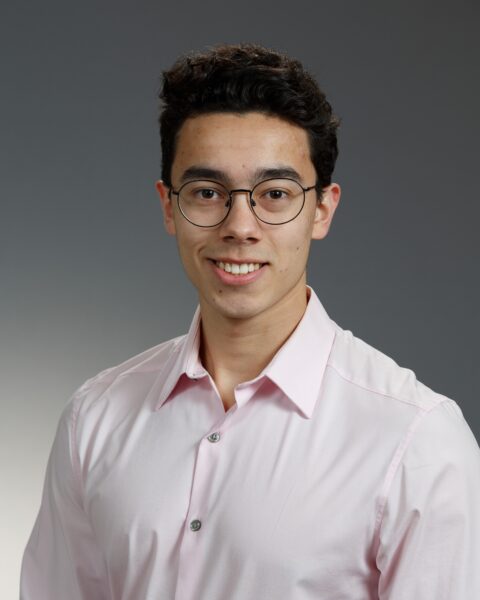 Guillermo Antunez Tierney COS’25, “Investigating Regulation of Biofilm Deficiency in Lon Protease-Mutant Acinetobacter baumannii.”
Guillermo Antunez Tierney COS’25, “Investigating Regulation of Biofilm Deficiency in Lon Protease-Mutant Acinetobacter baumannii.”
Mentor: Professor Veronica Godoy-Carter, COS, Biology
Acinetobacter baumannii is a bacterial pathogen closely associated with immunocompromised patients and hospital-acquired infections. Beyond the threat of its clinical strains’ multi-drug resistances, A. baumannii survives on surfaces for long durations and forms robust self-made structures encasing communities of cells, called biofilms. Learning more about the regulation of this protective biofilm system is critical for eradication efforts. By performing a transposon sequencing (Tn-seq) experiment that makes use of a genome-integrated florescent reporter, I hope to identify novel regulators of two surface proteins whose joint overproduction seemingly prevents biofilm formation. I plan to share my results at RISE and BBM.
 Pranali Ashara COS’25, “Organic Micropollutant Profile in Partially Treated and Fully Treated Wastewater Effluent”
Pranali Ashara COS’25, “Organic Micropollutant Profile in Partially Treated and Fully Treated Wastewater Effluent”
Mentor: Professor Zhenyu Tian, COS, Chemistry & Chemical Biology
Organic micropollutants present in low concentrations in surface water bodies, such as the Charles River in Boston, can pose a threat to environmental and human health. However, the effect of conventional wastewater treatment on OMPs is uncontrolled and can yield the production of toxic by-products. Previous studies have created a pollutant profile of untreated wastewater effluent from CSOs (combined sewer overflows), however, data in partially treated and fully treated effluent is lacking. Non-target analysis (NTA), an analytical chemistry technique, will be utilized to characterize the interactions, toxicity, and quantity of these compounds in these flows.
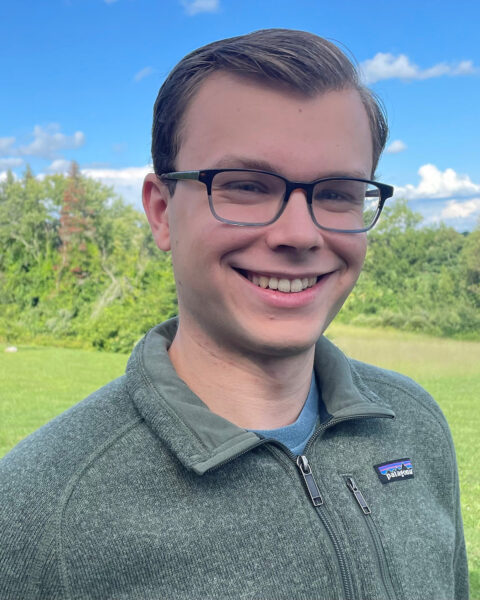 Luke Bagdonas COS’25, “Sunlight Driven Photochemical Degradation of Spartina alterniflora Detritus”
Luke Bagdonas COS’25, “Sunlight Driven Photochemical Degradation of Spartina alterniflora Detritus”
Mentor: Professor Aron Stubbins, COS, Chemistry & Chemical Biology
This project analyzes how photodegradation affects the composition and production of dissolved organic carbon (DOC) from living and senesced Spartina alterniflora litter. Through chemical analyses, important insights can be made about the role sunlight has on the production kinetics and reactivity of photo-released DOC and the impacts these findings have on carbon cycling within salt marsh ecosystems. Results from this project are planned to be presented and published in future semesters to contribute to a growing knowledge base about how to predict and mitigate further impacts of climate change on these important carbon-sequestering environments.
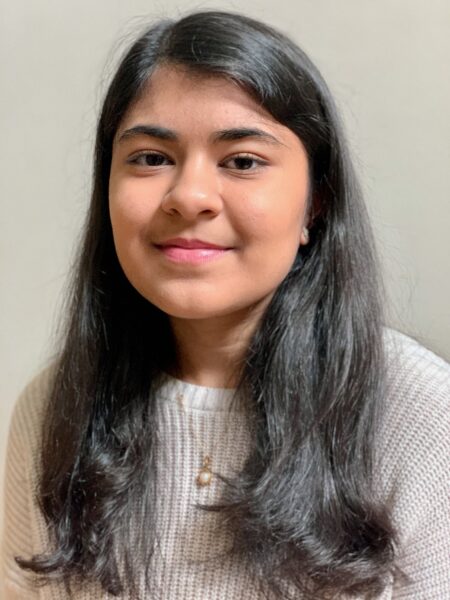 Aribah Baig COS’25, “Is Student Symptom Screening an Effective Strategy for Preventing Respiratory Viral Infections in Elementary School Children?”
Aribah Baig COS’25, “Is Student Symptom Screening an Effective Strategy for Preventing Respiratory Viral Infections in Elementary School Children?”
Mentor: Professor Dessy Raytcheva, COS, Biology
During the COVID-19 pandemic, many schools relied on screening student symptoms as a way to reduce viral transmission in schools. Yet, the pandemic also highlighted that COVID-19 infection does not produce symptoms in some people, yet these people can still infect others. Respiratory viral infections heavily impact children’s health, leading to a substantial number of illnesses. This proposal aims to understand how often respiratory viral infections cause symptoms by analyzing data collected from a study of 236 elementary schoolchildren. I plan to share the study results at RISE and will submit an abstract to present at MGH Clinical Research Day.
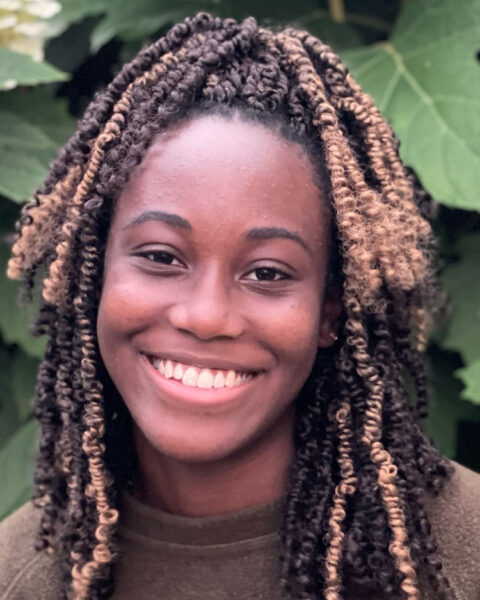
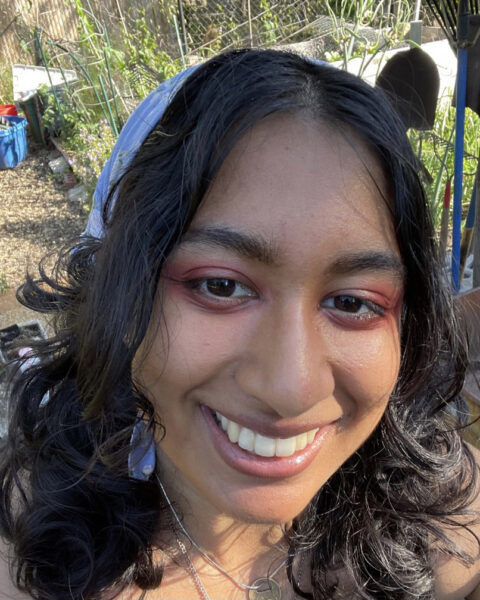 Kourtney Bichotte Dunner COS’25 & Sneha Vaidya COS’25, “Growing Seeds of Kinship Zine”
Kourtney Bichotte Dunner COS’25 & Sneha Vaidya COS’25, “Growing Seeds of Kinship Zine”
Mentor: Professor Kelsey Pieper, COE, Civil & Environmental Engineer
Our zine targets Northeastern students, sparking dialogue on reciprocity, and environmental stewardship. In an era of rapid digital consumption, zines democratize knowledge, offer a remedy for modern visual fatigue, and foster community and kinship often missing in mainstream media. Grounded in indigenous wisdom and a framework of food sovereignty, our zine centers on reciprocity, emphasizing relationships and community agency. Through the integration of art and climate justice, we aspire to foster land connections within our campus and the Boston urban landscape.
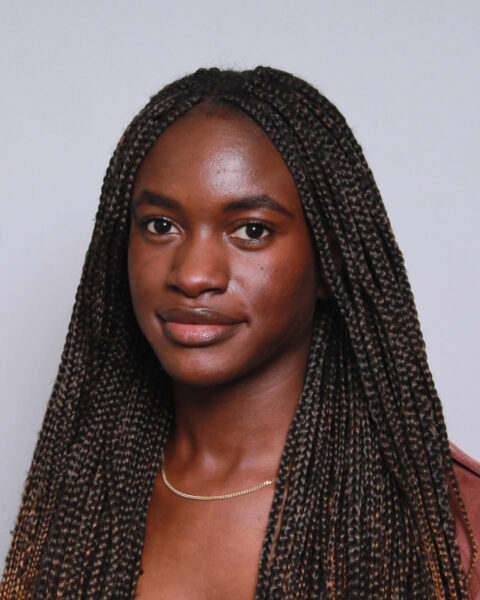 Chiara Blake COS’25, “Determining Whether Conception Depends on the Overlap of Male and Female Circadian Sexual Rhythms”
Chiara Blake COS’25, “Determining Whether Conception Depends on the Overlap of Male and Female Circadian Sexual Rhythms”
Mentor: Professor Adrianna Crossing, Bouvé, Applied Psychology
Recent discoveries have demonstrated a rhythm in sexual drive based on circadian rhythms which regulate biological and physiological functions. This project aims to determine if conception depends on partners having an overlap in sexual drive rhythms. Using mice as model organisms we plan to evaluate differences in conception rate between mice with aligned and misaligned sexual rhythms. We expected to see a higher conception rate amongst mice with aligned sexual rhythms, compared to those with misaligned sexual rhythms. These results will be shared at RISE and published in a scientific paper after further aspects of the larger project are completed.
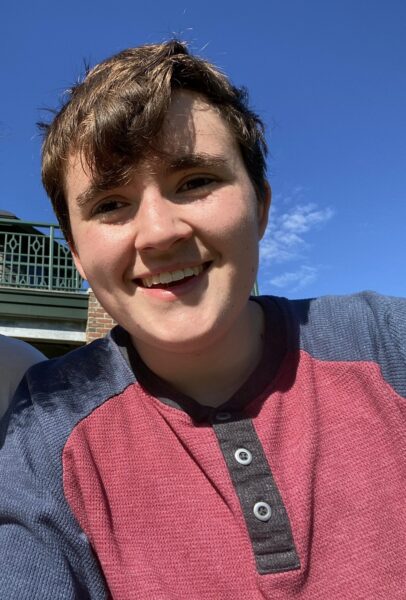 Beyer Bullard CSSH’23, “Globetrotting Graphics: A Study of LGBTQ+ Graphic Novels”
Beyer Bullard CSSH’23, “Globetrotting Graphics: A Study of LGBTQ+ Graphic Novels”
Mentor: Professor Brandon Sichling, CAMD, Art and Design
My project will explore how graphic novels tell the powerful, diverse stories of LGBTQ+ experiences across the world. First, I will conduct primary research at an International Comics Festival and compile a comprehensive research review of LGBTQ+ comics across the world. Second, I will create and publish my own graphic narrative sharing what it means to me to be a member of the LGBTQ+ community today. This project serves as a statement of pride and resistance for our community, allowing me to highlight the incredible diversity, strength, and joy that exists around the globe and deserves to be seen.
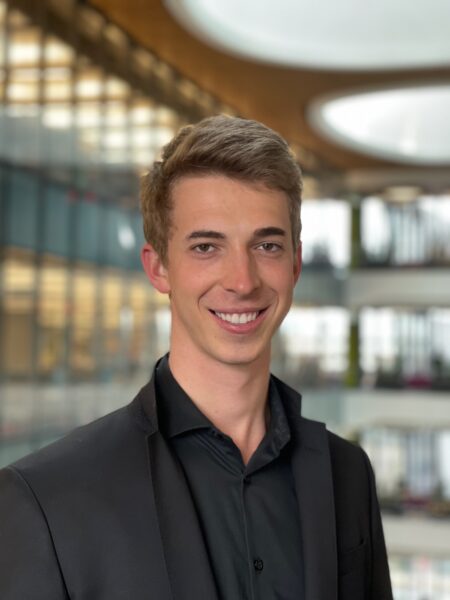 Janis Busse COS’23, “Chagas Disease: Series 54460 Novel Compounds”
Janis Busse COS’23, “Chagas Disease: Series 54460 Novel Compounds”
Mentor: Professor Lori Ferrins, COS, Chemistry & Chemical Biology
American trypanosomiasis, also called Chagas disease, is a potentially life-threatening disease that is transmitted by a protozoan known as Trypanosoma cruzi . It is a disease that affects over six million people, and there are currently no drugs available to treat Chagas in the chronic phase. I will utilize medicinal, organic chemistry to synthesize novel compounds against Chagas disease to further explore the structure-activity relationships in series 54460. I will collaborate with the Drugs for Neglected Diseases Initiative, DNDi, to see if these novel compounds are potentially active against Chagas disease.
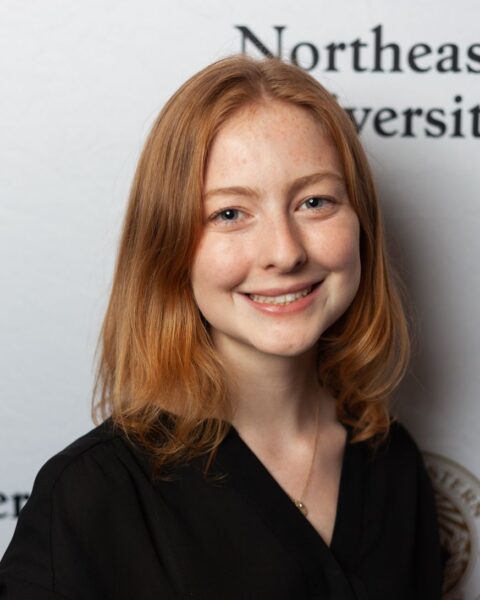 Allie Cauchon COS’24, “Early and Earlier Life Stress: How Does Stress Exposure Before or After Birth Impact Vulnerability to Anxiety?”
Allie Cauchon COS’24, “Early and Earlier Life Stress: How Does Stress Exposure Before or After Birth Impact Vulnerability to Anxiety?”
Mentor: Professor Heather Brenhouse, COS, Psychology
Rodent models of early life stress (ELS) allow direct examination of brain and behavior changes; this typically involves working with pregnant rats to study their offspring. Some labs breed rats in-house; others order pregnant rats from breeding facilities. Our lab has found changes in the acoustic startle response (ASR) after ELS, but results varied between two cohorts, which were bred differently. Shipping during pregnancy likely confers additional gestational stress, so the present study directly compares the ASR of offspring from pregnant rats either bred in-house, bred in-house, and subjected to a prenatal stress paradigm, or shipped from a breeding facility.
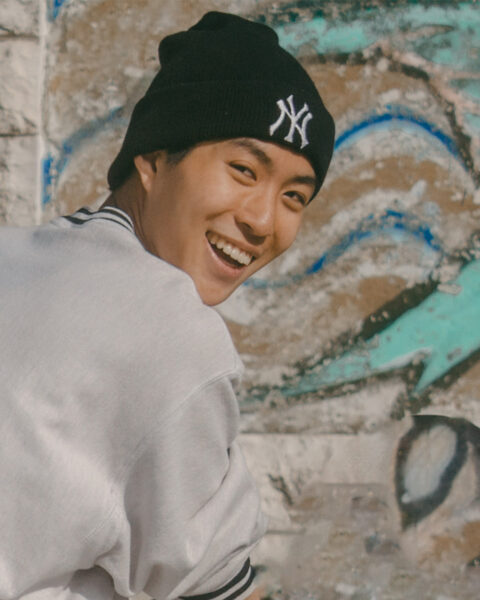 Alex Chang COS’25, “Solar-Powered Medicine in Off-Grid Kenya”
Alex Chang COS’25, “Solar-Powered Medicine in Off-Grid Kenya”
Mentor: Professor Richard Wamai, CSSH, Cultures; Societies; and Global Studies
Our project proposes an emergency medical services (EMS) program in which Boda Boda motorcyclists will facilitate the monitor, evaluation, and isolation of neglected tropical diseases (NTD) in rural, off-grid Kenyan villages. This will be accomplished using solar-powered refrigerated backpacks mobilized to transport temperature-dependent blood samples and vaccines between sparsely distributed healthcare facilities and villages, evaluated through the comparison of pre- and post-intervention rates of DAT testing, diagnosis of comorbidities, and pediatric vaccination rates. We hope that the ACCIH/TERMES Center can facilitate a community that is holistically more medically able, capable of cooperatively containing and treating potential epidemics. IRB pending.
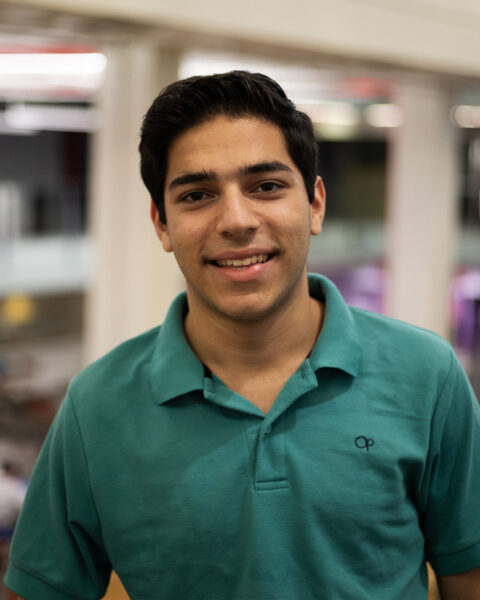
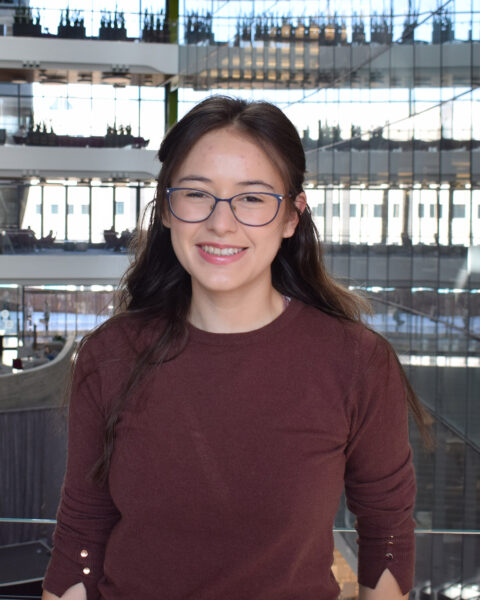 Alex Chiommino COE’25 & Rebecca DeBoard COE’25, “Quadruped Robot for Programming Research and Learning Platform”
Alex Chiommino COE’25 & Rebecca DeBoard COE’25, “Quadruped Robot for Programming Research and Learning Platform”
Mentor: Professor Alireza Ramezani, COE, Electrical and Computer Engineering
This project focuses on the development of a four-legged robot capable of standing and walking. Drawing inspiration from biology and anatomy, a quadrupedal design enables the robot to navigate diverse terrains more effectively than traditional wheeled robots. Movement will be achieved using custom actuators, sensors, and a lightweight structure. Beyond its immediate goals, the robot is envisioned to serve as a versatile research and development platform for Northeastern s Robotics Club, with potential applications including advanced robotics, artificial intelligence, and computer vision.
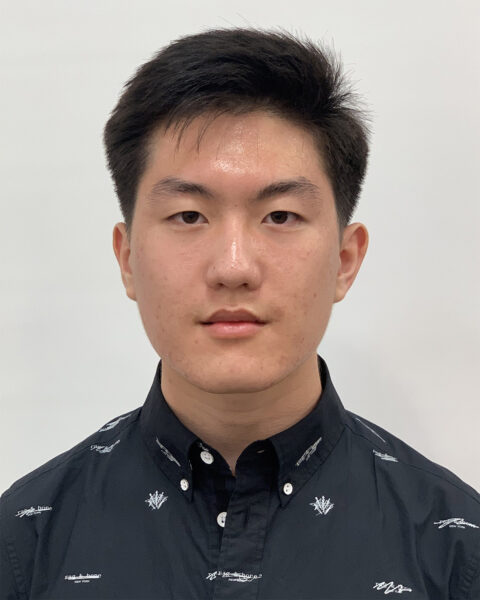 Brian Chong COS’24, “Engineering Allogeneic CAR-T Cells for Solid Tumor Treatment”
Brian Chong COS’24, “Engineering Allogeneic CAR-T Cells for Solid Tumor Treatment”
Mentor: Professor Stephen Hatfield, Bouvé, Pharmaceutical Science
Chimeric antigen receptor T (CAR-T) cell therapy is an emerging novel approach to the treatment of cancer. However, clinical failures are likely attributed by the biochemical and immunological immunosuppressive barriers of a human tumor microenvironment (TME). The goal of the project is to genetically engineer allogeneic (‘off-the-shelf’) CAR-T cells that are resistant to both biochemical (adenosine) and immunological (PD-L1 and TGF-β) inhibitory signaling. The results may be a breakthrough in the therapeutic potential of CAR-T cells against solid tumors in the field of immunotherapy. Therefore, our research findings will be presented at RISE and published in a peer-reviewed journal.
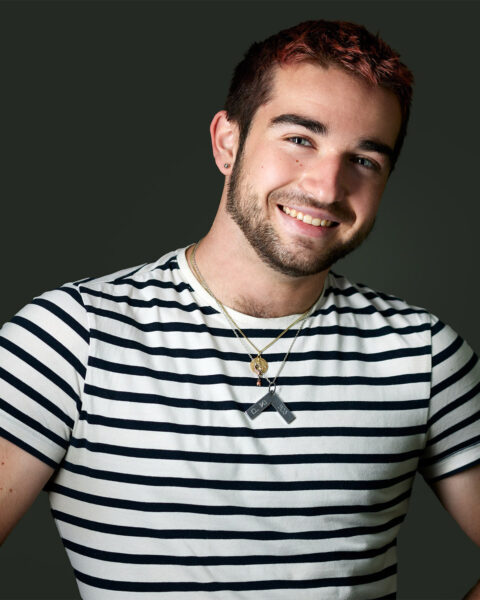 Antonin Cornillon COS’24, “Determining the Impact of the vglut2 Pathway on Behavioral Inhibition and Associative Learning in the Magel2 Mouse Model of Prader-Willi Syndrome”
Antonin Cornillon COS’24, “Determining the Impact of the vglut2 Pathway on Behavioral Inhibition and Associative Learning in the Magel2 Mouse Model of Prader-Willi Syndrome”
Mentor: Professor Lesley Ricci, COS, Psychology
Prader-Willi syndrome is a rare, multisystem genetic disorder that characterizes as hyperphagia, obesity, as well as dysfunctional behavior inhibition. This project serves to better understand the role that vesicular glutamate transport II (vglut2) expressing neurons in the infralimbic cortex can have on associative learning ability and behavior inhibition. By stimulating the vglut2 expressing neurons in the infralimbic cortex, we expect to see an increase in learning ability and cognitive flexibility. This holds promise in treating individuals with PWS, opening the doors to a variety of novel treatments for PWS, such as deep brain stimulation.
 Aunjoli Das COS’24, “The Effects of Sunlight on the Dissolved Organic Carbon Released by Sugar Kelp (Laminaria saccharina) and Rockweed (Ascophyllum nodosum)”
Aunjoli Das COS’24, “The Effects of Sunlight on the Dissolved Organic Carbon Released by Sugar Kelp (Laminaria saccharina) and Rockweed (Ascophyllum nodosum)”
Mentor: Professor Aron Stubbins, COS, Marine & Environment Sciences
The objective of this research is to evaluate how sunlight affects the breakdown of DOC (dissolved organic carbon) released by two important species of macroalgae: Sugar Kelp and Rockweed. I will meet this goal by: 1) assessing DOC production from algae; 2) assessing the proportion of DOC that resists breakdown from sunlight. The results will quantify the proportion of carbon that remains not-broken down and sequestered in deep waters. This information is important to understanding of the full capacity of macroalgae to remove carbon dioxide from the atmosphere. I will present my findings at the Spring 2024 RISE conference.
 Elizabeth DeToma COE’23, “Using In-Situ Raman to Study the Incorporation of Cations from Different Alkaline Electrolytes into a Layered Manganese Dioxide Electrode”
Elizabeth DeToma COE’23, “Using In-Situ Raman to Study the Incorporation of Cations from Different Alkaline Electrolytes into a Layered Manganese Dioxide Electrode”
Mentor: Professor Joshua Gallaway, COE, Chemical Engineering
Alkaline zinc-manganese dioxide are a safe, low cost option for grid scale energy storage, but its bismuth-aided rechargeability mechanism needs to be understood in order to take full advantage of this technology. This project will use Raman spectroscopy to characterize the surface of alkaline manganese-dioxide cathodes with and without a bismuth additive under various alkaline electrolytes. This will help determine if bismuth affects the rechargeability through the interlayer environment of layered manganese-dioxide. The results of this project will be shared at RISE with the possibility of being included in a peer-reviewed publication.
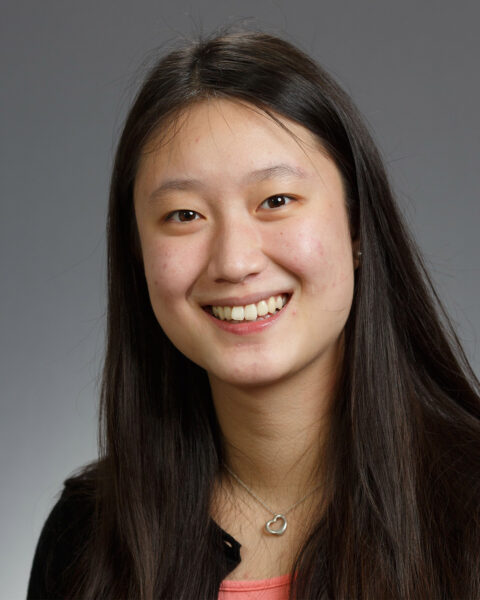
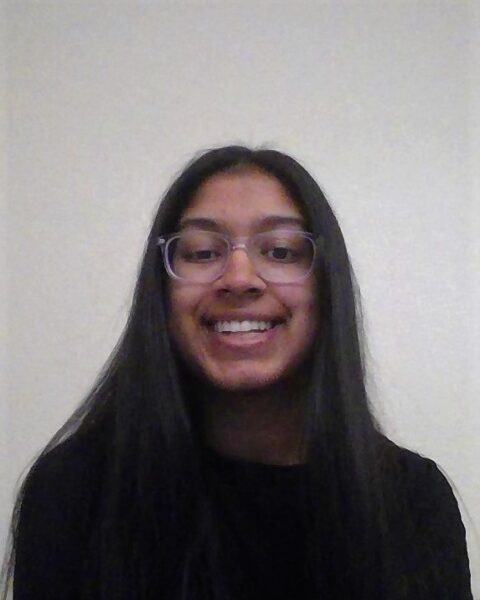 Janis Dong COS’24 & Deeptha Narasimhan COS’24, “EnCoPhAC-DB and PDB-LIKE: Identifying Photoenzyme Candidates Through Database Creation and Analysis”
Janis Dong COS’24 & Deeptha Narasimhan COS’24, “EnCoPhAC-DB and PDB-LIKE: Identifying Photoenzyme Candidates Through Database Creation and Analysis”
Mentor: Professor Sijia Dong, COS, Chemistry & Chemical Biology
Natural enzymes containing certain cofactors have the potential to be repurposed into photoenzymes for non-natural reactions. In this work, we develop a confidence-based scoring system, Protein Data Bank Ligand of Interest Likelihood for Enzymes (PDB-LIKE), to identify the ligand of interest from an enzyme’s PDB entry and build a database, Enzymes Containing Photoactivatable Cofactors Database (EnCoPhAC-DB), to store both the reaction and structural data for enzymes that contain potentially photoactivatable bio-cofactors. We conduct distance analysis and Sequence Similarity Network (SSN) analysis to pinpoint the factors that affect substrate/inhibitor and cofactor interaction. These potential candidates open doors to new biomedical research.
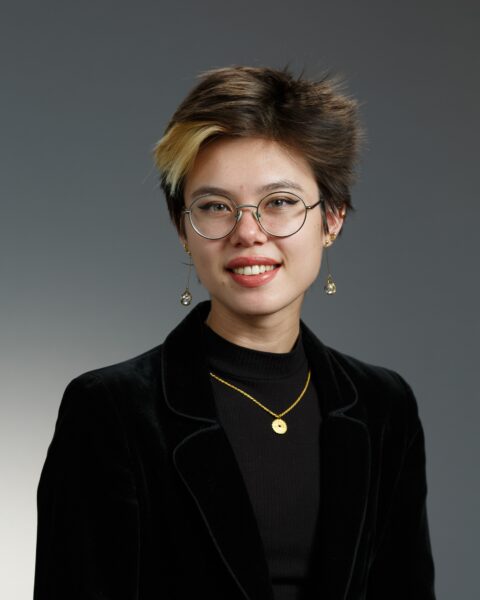 Kai Doran COS’25, “The Neuroscience of General Pavlovian-Instrumental Transfer”
Kai Doran COS’25, “The Neuroscience of General Pavlovian-Instrumental Transfer”
Mentor: Professor Juliet Davidow, COS, Psychology
Adolescence is a key developmental period where the learning systems mature. Parts of the brain involved in learning, memory, and integration, are often indicated in the formation of adaptive and maladaptive behaviors, but the neural features resulting in function versus dysfunction are poorly characterized in adolescents. This study investigates the neurobiology and psychology of basic learning mechanisms in human adolescents, utilizing fMRI neuroimaging and computational modeling. Better understanding the neural regions of interest, such as the ventromedial prefrontal cortex and ventral striatum, has far-reaching implications in adolescent psychiatry. Results will eventually be submitted for external publication in a scientific journal.
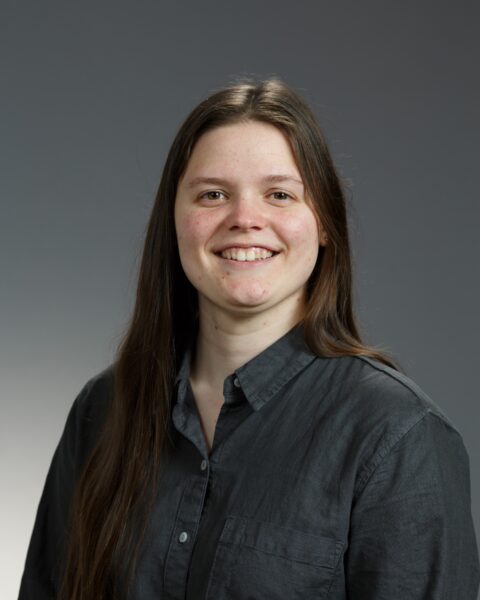 Jennifer Field COS’24, “Self-Powered Smart Cane”
Jennifer Field COS’24, “Self-Powered Smart Cane”
Mentor: Professor Canek Fuentes Hernandez, COE, Electrical and Computer Engineering
The Self-Powered Smart Cane project consists of the development of power autonomous surfaces that sense, compute, and communicate to improve visually impaired individuals’ 3D awareness of the environment. The cane will use organic light detectors that will capture energy to be transferred to a haptic feedback system which will act as a proximity detector to objects in their surroundings. Through user interviews, user needs can be translated into engineering solutions which can be prototyped using techniques such as 3D and ink-jet printing. The project hopes to develop an assistive technology that can improve the lives of people with visual impairments.
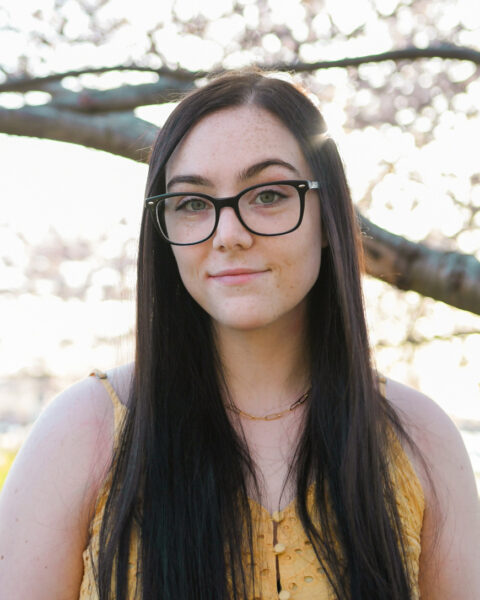 Riley Giallanza Bouvé’24, “Dynamic Disability: A Structurally Excluded Class”
Riley Giallanza Bouvé’24, “Dynamic Disability: A Structurally Excluded Class”
Mentor: Professor Laura Senier, CSSH, Sociology and Anthropology
Several frameworks by which society conceptualizes disability have been proposed. As a result, which impairments promote disability is still heavily contested. The medical model, for instance, claims disability is an individual and physical impairment, while the social model asserts that disability is a product of society’s arrangement; in modern research, disability is stratified along the lines of physical or social impairments. However, by not accouting for the interplay between disabling factors, these models structurally exclude fluctuating conditions that may cause physcial and social impairments from classifying as disabilities. This project will introduce this dynamic model of disability to current discourse.
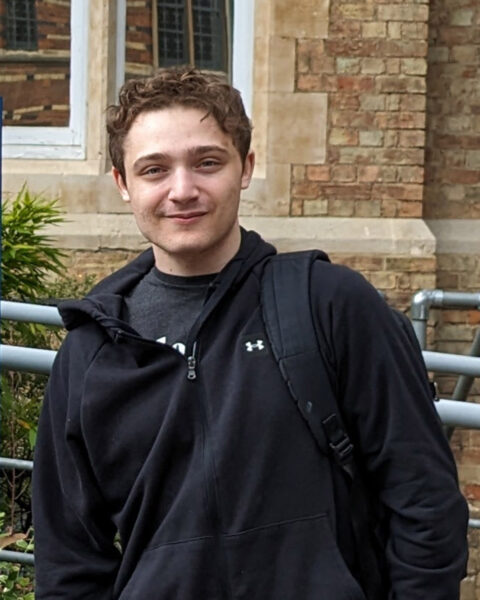 Jake Ginesin Khoury’25, “Automatic Software Bug Fixing”
Jake Ginesin Khoury’25, “Automatic Software Bug Fixing”
Mentor: Professor Cristina Nita-Rotaru, Khoury, Computer Science
My project aims to develop a method to automatically discover and fix software bugs. My approach involves making use of formal methods and directed model checking research to reason about the underlying structure of software in an efficient and mathematically rigorous manner. If successful, my findings and the completed tool will be published and shared openly on Github. Hopefully, my research will make it easier for software engineers to ensure their code is bug-free and reliable.
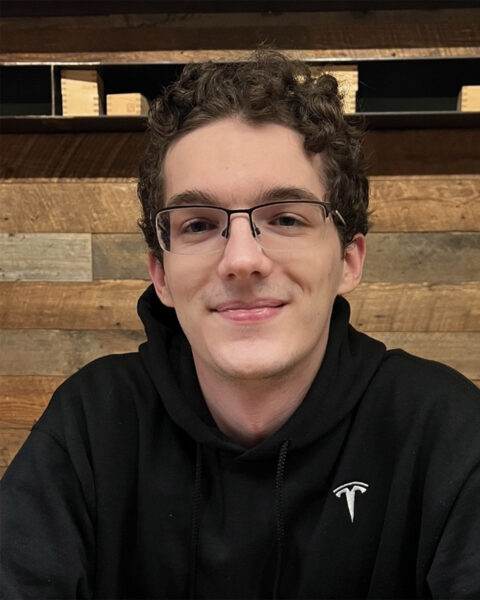 Thomas Goodwin COE’24, “Optimizing Conductivity in Solid-State Lithium-ion Cathodes”
Thomas Goodwin COE’24, “Optimizing Conductivity in Solid-State Lithium-ion Cathodes”
Mentor: Professor Joshua Gallaway, COE, Chemical Engineering
Solid-state batteries offer a safer, higher-energy density alternative to traditional lithium-ion batteries containing flammable liquid electrolyte. The goal of this project is to optimize the amount of carbon black additive included in Lithium Iron Phosphate (LFP) cathodes for composite solid-state electrolyte batteries to improve electrical conductivity. It will be determined whether the addition of carbon black impedes ionic conductivity in solid-state systems as well as if increasing the thickness of the cathode has a linear effect on the observed electronic conductivity of the cathode. Results will be presented at Northeastern’s RISE expo and published in an academic journal.
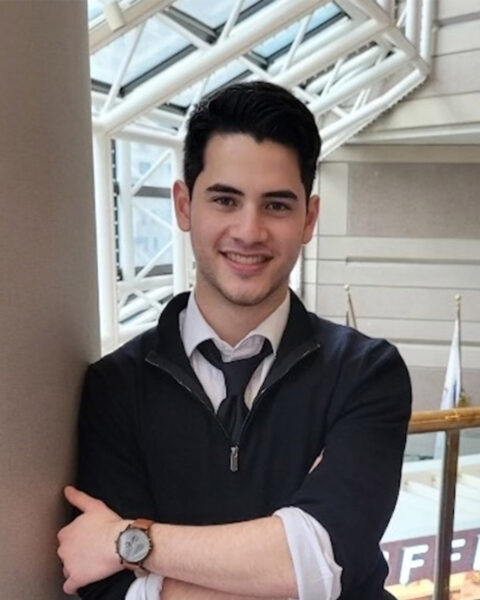
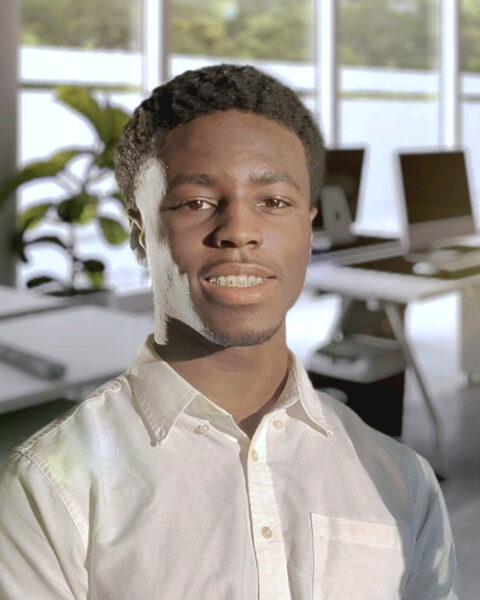
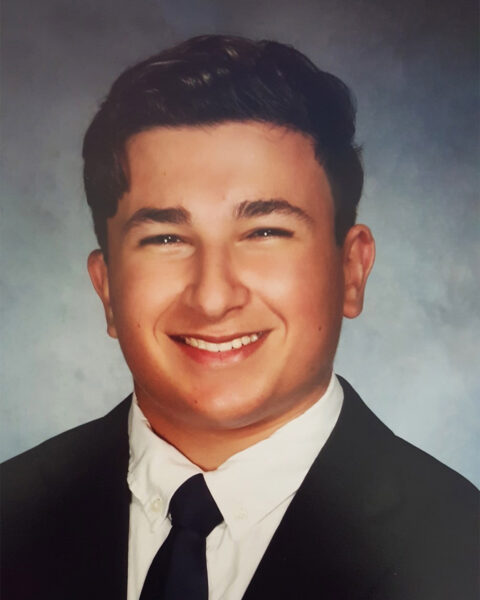 Oliver Hugh COE’25, Louis Foley COE’25, Joseph Dispirito Khoury’25, “IoT NFT Hydroponic System: Optimizing Efficiency, Monitoring, and Control”
Oliver Hugh COE’25, Louis Foley COE’25, Joseph Dispirito Khoury’25, “IoT NFT Hydroponic System: Optimizing Efficiency, Monitoring, and Control”
Mentor: Professor Mehdi Abedi, COE, Mech & Industrial Engineering
Hydroponics, the process of growing crops with a nutrient solution instead of soil, is a promising solution to meet the world’s growing food demands in a manner far more sustainable and efficient than traditional agriculture. We plan to build a closed-loop Nutrient Film Technique (NFT) hydroponic system with industrial applications that will monitor environmental growth factors in our system. The system will wirelessly relay that information to a laptop, where custom software can display, log, and control remotely. Designs will be published to a public repository, and we hope to share our prototype with local urban agriculture organizations in Boston.
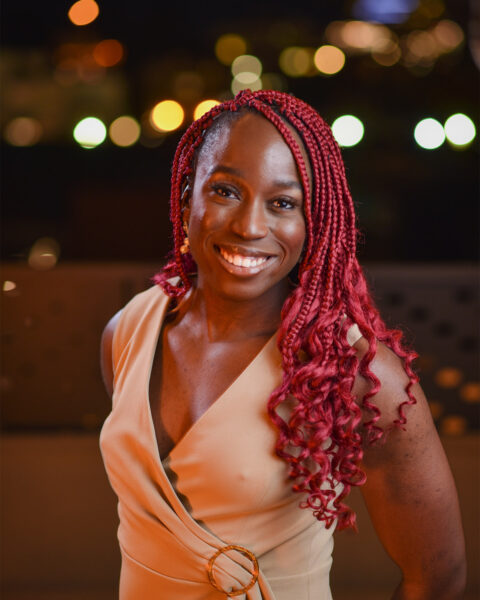 Amara Ifeji CSSH’24, “State-Sanctioned Environmental Injustice: An Ecowomanist Analysis of the Nigeria-Biafra War”
Amara Ifeji CSSH’24, “State-Sanctioned Environmental Injustice: An Ecowomanist Analysis of the Nigeria-Biafra War”
Mentor: Professor Getty Lustila, CSSH, Philosophy and Religion
The Nigeria-Biafra War (1967-1970) is characterized as one of sub-Saharan Africa’s “bloodiest wars,” resulting in upwards of three million deaths. Two million of these were Biafran women and children who faced starvation and disease during Nigeria’s economic blockade. This novel analysis of the war aims to employ environmental justice and ecowomainst theories to understand the blockade as a distributive, procedural, and recognitional environmental injustice endured by Biafran women. Through archival and interview data, this study aims to challenge current scholarship and recharacterize Biafran women as change agents who leveraged their environmental relationships in response to this injustice.
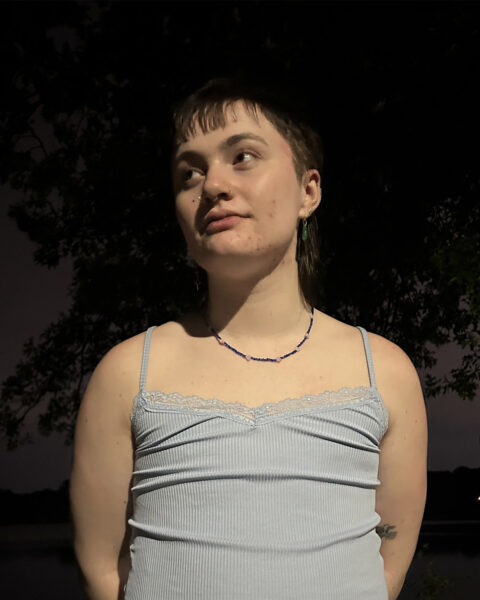 Ocean Johnson-Ouillette CSSH’24, “A Pledge to Trans Pasts, Presents, and Futures: Exploring Trans History in Boston Archives”
Ocean Johnson-Ouillette CSSH’24, “A Pledge to Trans Pasts, Presents, and Futures: Exploring Trans History in Boston Archives”
Mentor: Professor KJ Rawson, CSSH, English
This project aims to dive deep into the rich repository of information available in Boston’s archives with the goal of locating and increasing accessibility to trans-related historical items. Culminating in a research guide that will be published on the Digital Transgender Archive, this project will uncover archival materials that have not been previously identified as trans, ultimately contributing to the growing narrative of trans history and people. This project is a pledge to recognize and celebrate not only trans pasts, but also to continue honoring trans people, stories, and truths for the rest of history.
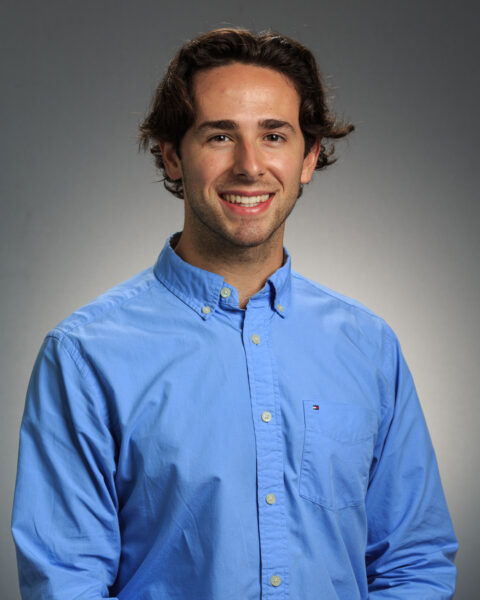 Aidan Kenny COE’24, “Artistic Algorithms: Human-Computer Collaboration in Generating Accessible Abstract Art”
Aidan Kenny COE’24, “Artistic Algorithms: Human-Computer Collaboration in Generating Accessible Abstract Art”
Mentor: Professor Mark Sivak, CAMD, Art and Design
This interdisciplinary research project seeks to develop an accessible machine for generative abstract art, bridging the fields of mechanical engineering, art, and product design. Many artistic endeavors are inaccessible due to financial, physical and cognitive barriers whereas the proposed system aims to simplify art creation. The project’s four phases encompass mechanism design, simulation, user interface development, and product finalization. The end result is a human-centered product that makes creating abstract line drawings easy and engaging. Dissemination includes submission to the Conference on Computer-Human Interaction and presentation at Northeastern’s RISE.
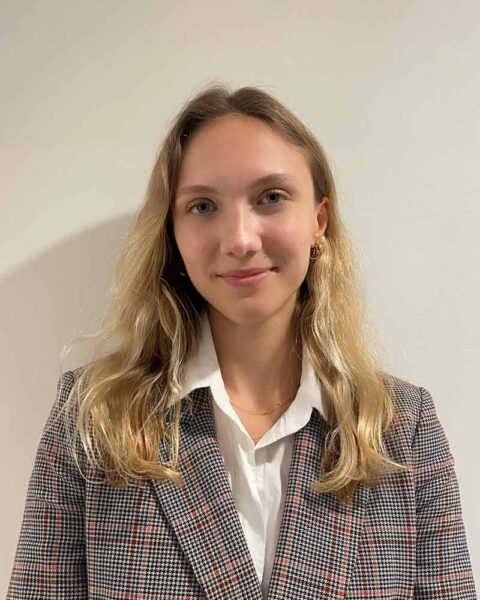 Sabrina Krista Bouvé’25, “Deciphering the Function of Fbln5 in Modulating TGF-β Signaling During Zebrafish Heart Regeneration”
Sabrina Krista Bouvé’25, “Deciphering the Function of Fbln5 in Modulating TGF-β Signaling During Zebrafish Heart Regeneration”
Mentor: Professor Ashleigh Shields, Bouvé, Health Sciences
My project will investigate how the fbln5 gene affects TGF-β signaling during zebrafish heart regeneration. Unraveling the mechanisms underpinning zebrafish’s ability to mend heart tissue holds the potential to propel groundbreaking advancements in gene therapies for individuals grappling with heart ailments. I’ll injure, immunostain, and image wild-type and triple mutant hearts to uncover fbln5’s role. I hypothesize that the injured fbln triple mutant will show reduced cardiomyocyte proliferation and regenerative abilities.
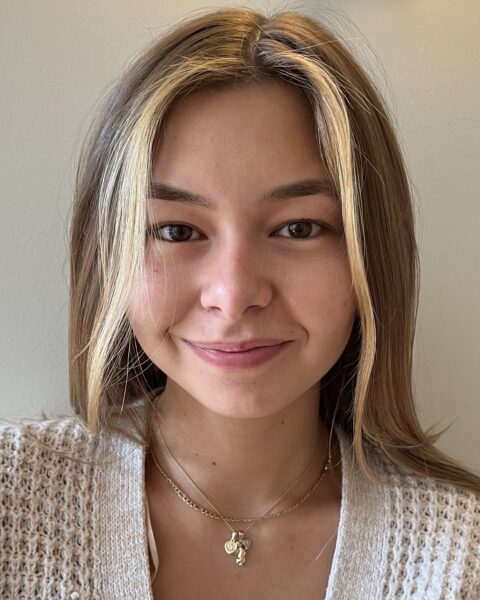 Angelina Magin CSSH’23, “The Relationship between Domestic Violence and War Trauma in Ukraine”
Angelina Magin CSSH’23, “The Relationship between Domestic Violence and War Trauma in Ukraine”
Mentor: Professor Ekaterina Botchkovar, CSSH, Criminology & Criminal Justice
This project aims to establish the role of war trauma relative to other predictors in domestic violence perpetration and victimization in Ukraine. Scarce research exists to identify the effect of role exposure on people’s behavior, and, in particular, in domestic violence. Our study would help address this issue. We use data elicited from a survey of 1247 residents of two Ukrainian cities, Kharkiv and Lviv, to establish the connection between war exposure and domestic violence. This manuscript will be presented at American Society of Criminology meetings in November 2023, and will be submitted to a peer-reviewed outlet in December, 2023.
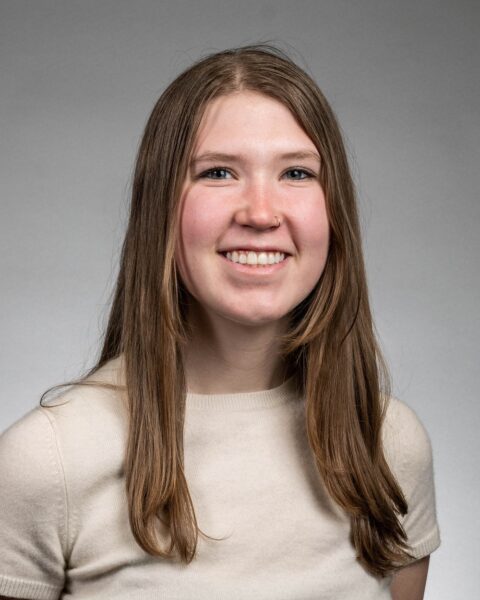 Gillian McClennen COS’23, “Pulcherriminic Acid as a Quorum-Sensing Signal”
Gillian McClennen COS’23, “Pulcherriminic Acid as a Quorum-Sensing Signal”
Mentor: Professor Yunrong Chai, COS, Biology
Biofilms are three-dimensional, structured communities of bacteria. Biofilms are hotspots of bacterial communication, where they transmit nutrients, metabolic signals, and virulence factors. It is important to study bacterial communication in biofilms in order to prevent or treat biofilm-associated infections, which are a growing threat in medical settings. In this project, we plan to use classical microbiology and molecular biology techniques to identify a component of pulcherrimin, a reddish-brown iron-binding pigment, as a communication signal in Bacillus subtilis biofilms. This will elucidate a novel form of bacterial communication, wherein a molecular signal serves both as a metal chelator and quorum-sensing signal.
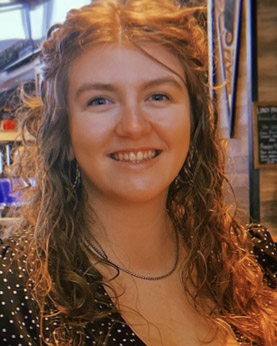 Madison Morgan COE’25, “Investigation into the Health Literacy Rate of the DeafBlind Community”
Madison Morgan COE’25, “Investigation into the Health Literacy Rate of the DeafBlind Community”
Mentor: Professor Chiara Bellini, COE, Bioengineering
I am researching how the electronic health literacy rate of DeafBlind(DB) individuals impacts their ability to understand their care in a medical setting. I aim to determine the root cause for a poor health literacy rate within the community and propose possible solutions. I will use the eHLQ to assess the Boston DB community’s ability to understand common technology and health vocabulary. Secondly, I am interviewing hospital staff using the Survey of DeafBlind Clinicians (SDBC) to assess the accessibility level of hospital policies. I wish to publish my findings in the Journal of DeafBlind Studies in Communication.
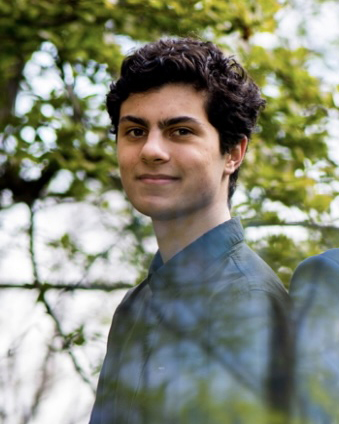 Dillon Nishigaya COS’25, “Histological and Spatial Transcriptomic Sample Preparation from Spaceflight Stressor Exposed Rat Ovaries”
Dillon Nishigaya COS’25, “Histological and Spatial Transcriptomic Sample Preparation from Spaceflight Stressor Exposed Rat Ovaries”
Mentor: Professor Dori Woods, COS, Biology
With the rise of female astronauts’ prevalence in spaceflight and travel, understanding the effects on female fertility and ovarian function during deep space exploration is paramount for women’s health. With spaceflight posing potential hazards to women’s reproductive health, it’s challenging to account for fertility and future side effects with limited research available. Currently, it’s unknown how susceptible the female reproductive system is to exposure to spaceflight stressors and its effects on the ovary. My project examines how exposure to spaceflight stressors impacts folliculogenesis, oocyte morphology, and DNA competence, aspects of ovarian health that are critical for reproductive and general health.
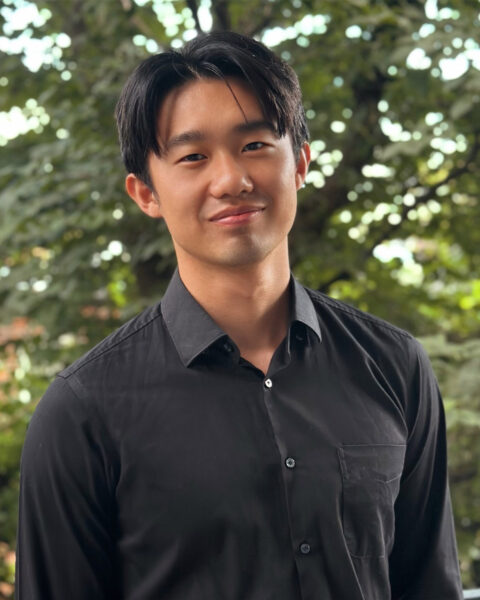 Chan Tae Park Bouvé’24, “Elucidation of Cannabinoid Receptors G-protein Coupling Awitch from Gαi to Gαs”
Chan Tae Park Bouvé’24, “Elucidation of Cannabinoid Receptors G-protein Coupling Awitch from Gαi to Gαs”
Mentor: Professor Hideaki Yano, Bouvé, Pharmaceutical Science
The cannabinoid receptor type-1 is one of the most expressed in the human brain and is responsible for producing neuromodulatory effects on appetite, pain, cognition and others. These receptors are the target of Δ9-THC, the main component of cannabis used recreationally and therapeutically. However, the development of synthetic cannabinoid receptor agonists came in association with severe side-effects such as seizures, tachycardia and zombie-like effects. My research not only aims to elucidate the G-protein mechanisms of these receptors, but also seek to see how receptor density can influence the receptor’s coupling to Gαi or Gαs, which may explain its adverse effects.
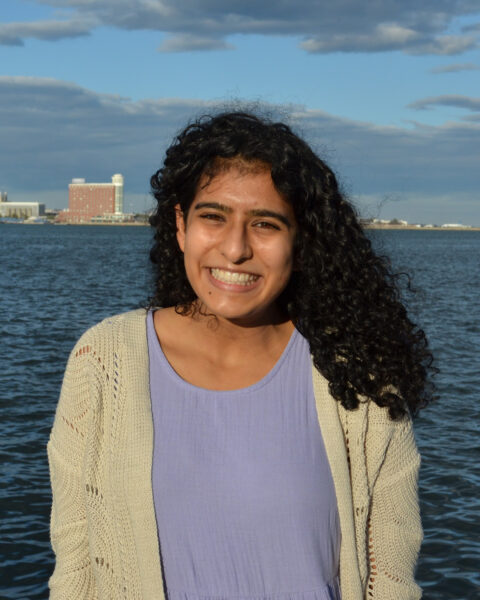
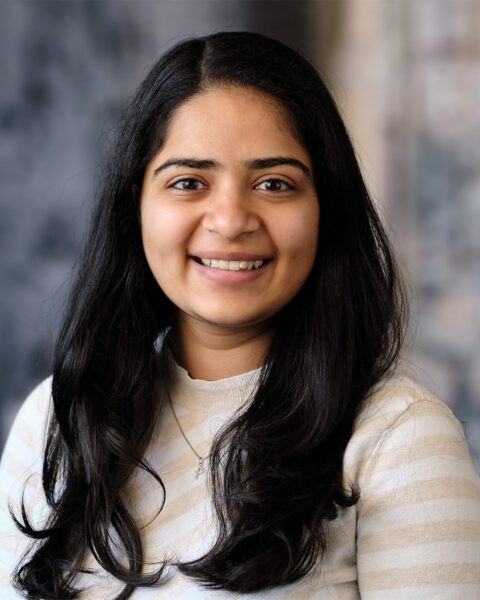
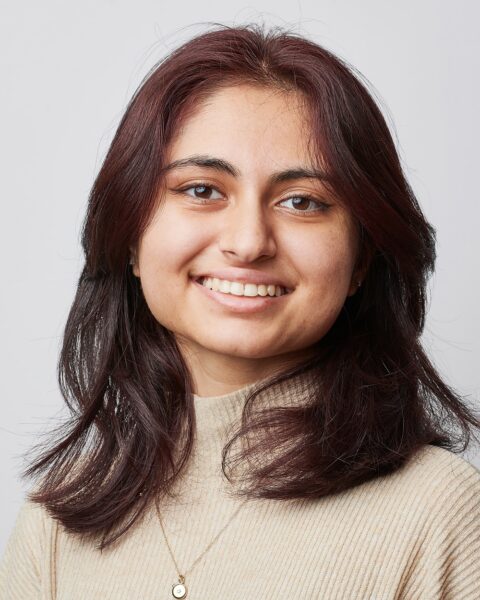 Ashka Patel COE’24, Priya Raval COE’23, Miti Patel COE’24, “Quantitative Point of Care Lateral Flow Assay of Ferritin”
Ashka Patel COE’24, Priya Raval COE’23, Miti Patel COE’24, “Quantitative Point of Care Lateral Flow Assay of Ferritin”
Mentor: Professor Timothy Lannin, COE, Bioengineering
Anemia caused by iron deficiency is highly prevalent, however, existing methods for iron deficiency diagnosis can be costly and need to be performed in lab or clinic settings. In collaboration with Synthera Health, our team aims to develop a novel rapid testing device that enables low-cost iron deficiency diagnosis for people globally. We will develop an assay that leverages antibodies and labeling nanoparticles to quantify blood ferritin with no additional equipment. We aim to patent the resulting technology and present our findings at RISE 2024.
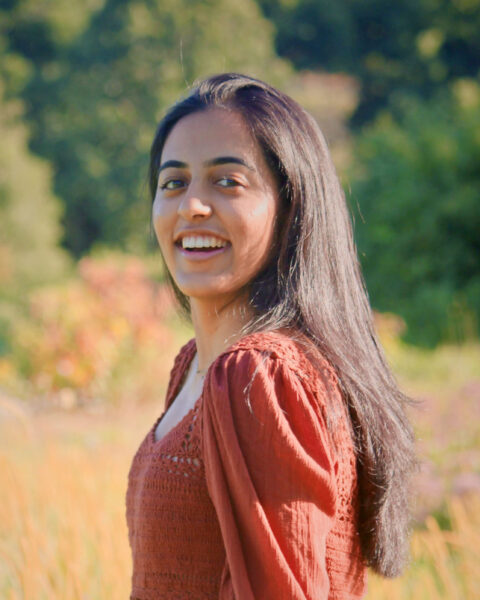 Shivani Patel COS’25, “Multiplex Editing CAR-T Cells to Persist Against Biochemical and Immunosuppressive Barriers in the Tumor Microenvironment (TME)”
Shivani Patel COS’25, “Multiplex Editing CAR-T Cells to Persist Against Biochemical and Immunosuppressive Barriers in the Tumor Microenvironment (TME)”
Mentor: Professor Stephen Hatfield, Bouvé, Pharmacy & Health Systems Sci
For this project, we will be engineering CAR (chimeric antigen receptor) T cells which can overcome immunosuppressive obstacles within the tumor microenvironment (TME). CAR-T cells are T cells that have been equipped with an additional receptor that targets a particular tumor of interest. In particular, we will be generating a cell product that is able to persist against the A2R signaling pathway in the TME which mitigates antitumor effect of T cells through extracellular adenosine and hypoxia. We will be using precise base editing technology, a modified form of CRISPR-Cas9, to create three simultaneous gene deletions in our CAR-T cells.
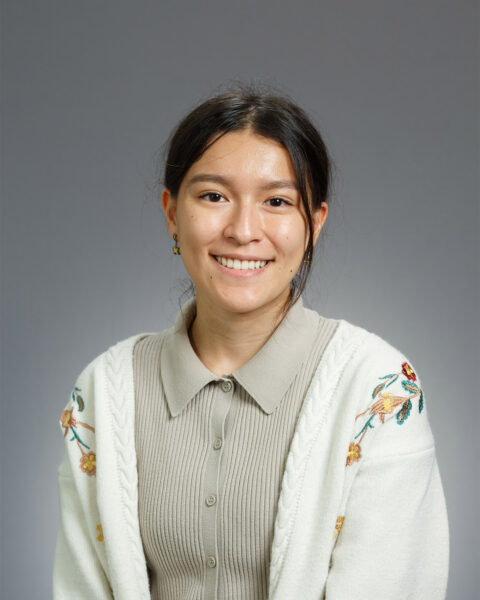 Maris Podgurski COS’24, “Improving the Aqueous Solubility of PfFNT Inhibiting Compounds by Enhancing Molecular sp3 Character”
Maris Podgurski COS’24, “Improving the Aqueous Solubility of PfFNT Inhibiting Compounds by Enhancing Molecular sp3 Character”
Mentor: Professor Roman Manetsch, COS, Chemistry & Chemical Biology
Plasmodium falciparum formate-nitrite transporter (PfFNT) has been identified as a unique biological target for novel antimalarial therapeutics capable of withstanding the growing threat of drug resistance against artemisinin. However, as current small molecule inhibitors of Pf FNT are not drug-like, alternative chemical spaces must be explored to develop feasible drug candidates possessing optimal activity and bioavailability. The Manetsch Lab has developed a series of active inhibitors of Pf FNT. However, these inhibitors still require further optimization in terms of oral bioavailability. This project aims to optimize the solubility of current frontrunners by integrating structural modifications to increase carbon bond saturation.
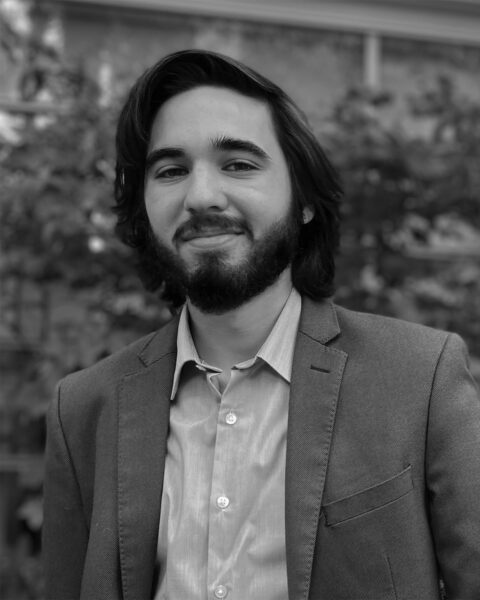 Justin Roffman COE’24, “Bridging the Gap: Exploring Materials and Manufacturing Processes to Reach Professional Grade User Experiences”
Justin Roffman COE’24, “Bridging the Gap: Exploring Materials and Manufacturing Processes to Reach Professional Grade User Experiences”
Mentor: Professor Mark Sivak, CAMD, Art and Design
This study aims to analyze how a university level mechanical engineering project can produce a professional user experience, and thereby compete with industry level products. The specific impact of material choice, manufacturing processes, and surface finishes on final UX is discussed. The purpose of this study is to elevate a prototype to a level in which the aesthetic finish enhances the fundamental functionality. Outcomes of this study include a database of materials and manufacturing processes along with the emotional reactions they generate. In addition, the paper gives recommendations to support and develop a project by leveraging these components.
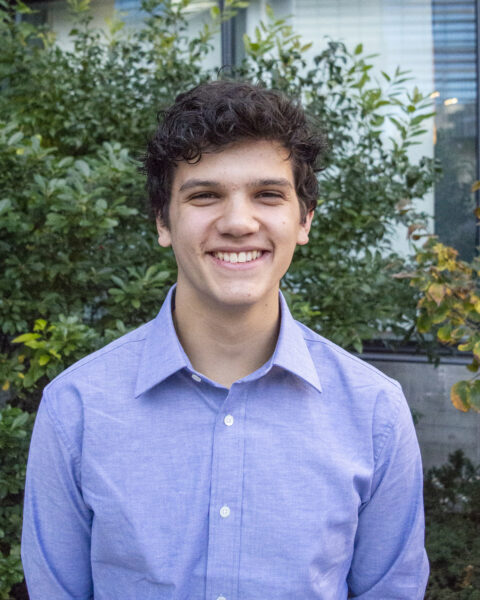 Henry Silverstein COE’25, “Internally Flanged Mechanical Rocket Separation System”
Henry Silverstein COE’25, “Internally Flanged Mechanical Rocket Separation System”
Mentor: Professor Andrew Gouldstone, COE, Mech & Industrial Engineering
This project intends to do a more thorough analysis, both with simulation and mechanical testing, of a mechanical separation device designed in AeroNU. The clamp derives many design features from a Marman clamp, a commonly used system for mechanical separation. However, these features are placed on the inside of the tubes being coupled (the airframe of the rocket), enabling its use on smaller-diameter rockets. Using finite element analysis to evaluate stress and maximum load and mechanical testing to confirm this analysis, the effectiveness of the design will be determined relative to comparable mechanisms.
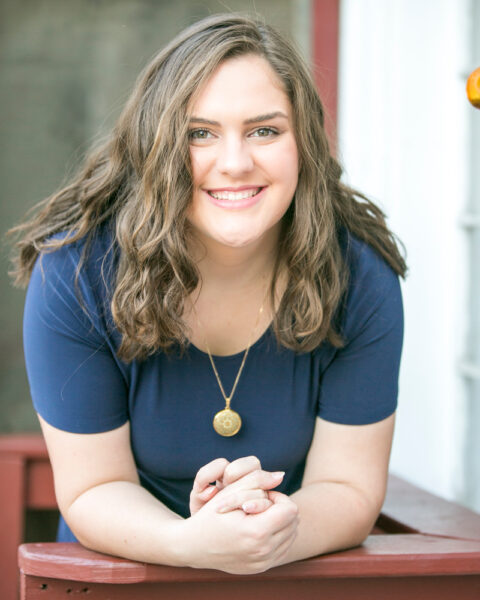 Jacqueline Smith COS’24, “Synthesis of Anti-Malarial Therapeutics”
Jacqueline Smith COS’24, “Synthesis of Anti-Malarial Therapeutics”
Mentor: Professor Roman Manetsch, COS, Chemistry & Chemical Biology
Malaria is the world’s most detrimental parasitic disease, with over 800,000 deaths in 2021 alone. Current treatments to malarial are becoming insufficient as antimicrobial resistance grows. The formate-nitrate transporter of the malarial parasite Plasmodium falciparum (PfFNT) is responsible for the efflux of lactic acid from the cell. When inhibited with a small drug-like molecule, lactic acid will be trapped inside the cell, killing the parasite. Compounds must be optimized for potency, or effectiveness, as well as metabolic stability.
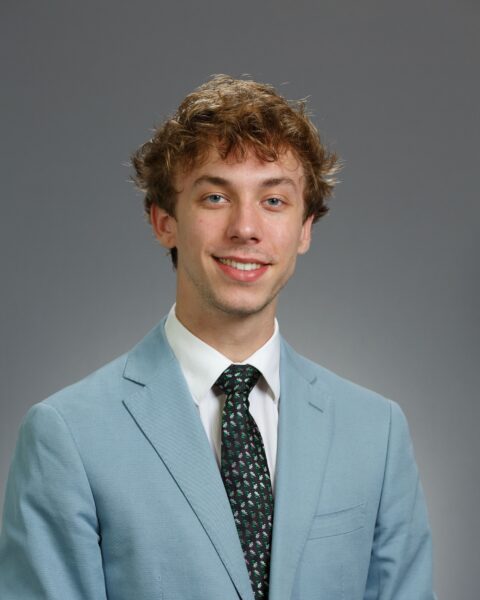 Zachary Stolberg COS’24, “Elucidating the Role of GABA in the ENS”
Zachary Stolberg COS’24, “Elucidating the Role of GABA in the ENS”
Mentor: Professor Abigail Koppes, COE, Chemical Engineering
GABA and its receptors have been implicated in multiple inflammatory gastrointestinal diseases such as Irritable Bowel Disease and Ulcerative Colitis, making it and it’s receptors common targets for therapeutics. By inducing an artificial inflammatory environment with lipopolysaccharides (LPS) in an enteric neuron culture, we hope to see a difference in expression between excitatory GABA-A receptor expression and inhibitory GABA-B receptor expression between control and experimental groups. The expression will be evaluated with immunocytochemistry and qPCR, allowing for the visualization and quantification of both receptors. We predict that GABA-A will dominate, since inflammatory states are typically associated with greater excitation.
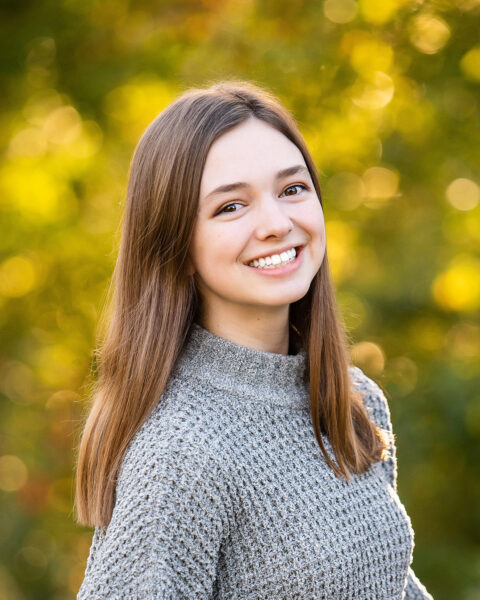
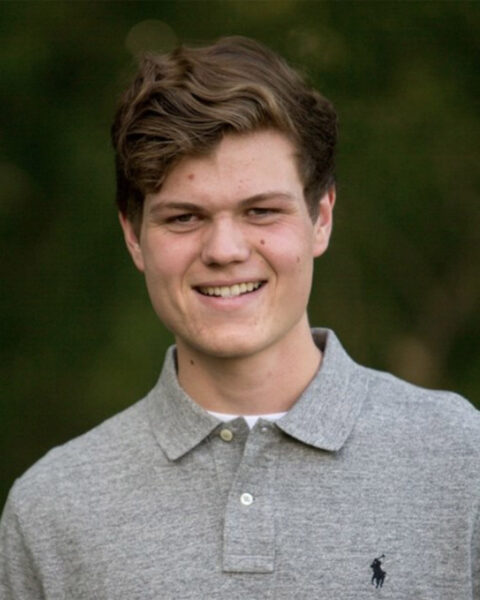
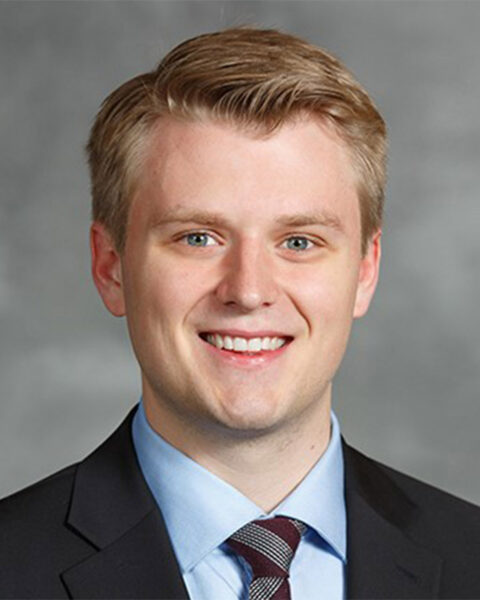 Katie Tschoepe COE’25, Scott Pozder Khoury’24, Zachary Hoglund COE’24, “Developing Tailored Solutions to Address Medical Device Shortages in Ghana”
Katie Tschoepe COE’25, Scott Pozder Khoury’24, Zachary Hoglund COE’24, “Developing Tailored Solutions to Address Medical Device Shortages in Ghana”
Mentor: Professor Joshua Hertz, COE, Mech & Industrial Engineering
Members of the student-led organization Innovators for Global Health (IGH) will design and produce medical devices in response to prior work done in Accra, Ghana earlier this year. These devices include a suction pump stopper, an oxygen line splitter, and a hospital bed. Members will also begin an IGH chapter in Ghana through this project. This project aims to fulfill the needs assessed in their partner hospitals, to inform sustainable development of medical technology, and to promote an understanding of the need for this type of development. Results from this project will be shared at RISE and in Ghana.
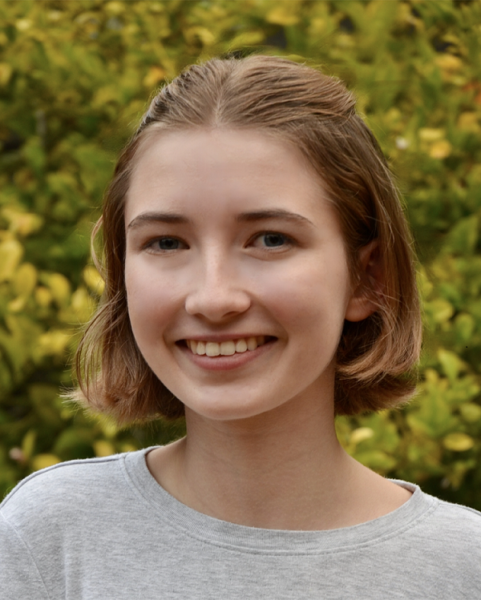 Victoria Vance COS’25, “Quantifying c-fos in Behaviorally Characterized Rats”
Victoria Vance COS’25, “Quantifying c-fos in Behaviorally Characterized Rats”
Mentor: Professor Rebecca Shansky, COS, Psychology
Conditioned fear responses have been primarily studied through a freezing behavior, and typically only in males, but females have exhibited an active escape response: darting. My project aims to understand the neural circuitry that underlies this difference through c-fos staining, which can determine recently active brain regions. The Periaqueductal Gray is our region of interest, as it is a mediator of fear responses and motivated behaviors. The c-fos staining of the PAG will be crucial in understanding the behavior difference in the darters vs non-darters. My research will be presented at the 2024 RISE conference in a poster-style presentation.
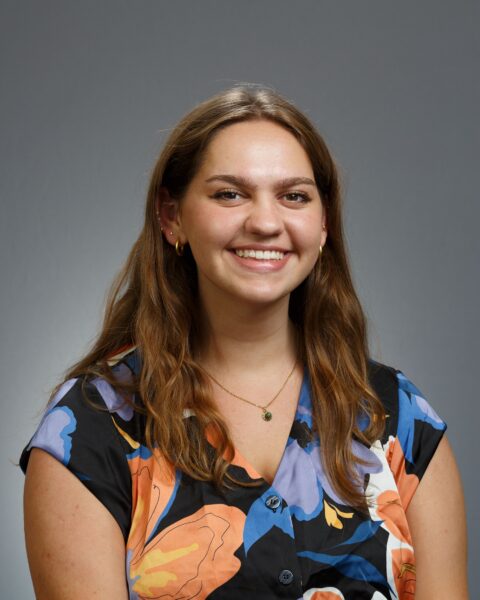 Cassandra Vongrej COS’25, “The Importance of Macroalgal Dissolved Organic Carbon Release as a Carbon Dioxide Reducing Technology (Continued)”
Cassandra Vongrej COS’25, “The Importance of Macroalgal Dissolved Organic Carbon Release as a Carbon Dioxide Reducing Technology (Continued)”
Mentor: Professor Aron Stubbins, COS, Marine & Environment Sciences
Carbon dioxide is a main contributor to global warming due to increasing atmospheric concentrations. To mitigate the impacts of climate change, natural and engineered carbon dioxide reduction (CDR) is required. The growth of macroalgae is one CDR pathway, as macroalgae sequester large amounts of carbon in the form of dissolved organic carbon (DOC), which can be further characterized. Here, wild sugar kelp ( Laminaria saccharina ) and rockweed ( Fucus distichus and Ascophyllum nodosum) will be grown to analyze DOC release and its resistance to biodegradation. These results will be shared to provide knowledge on algal carbon cycling and potential climate change mitigation.
 Rowan Waring COS’25, “Development of a Safe and Effective Drug for Trypanosoma cruzi (Chagas Disease) Via Series 54460”
Rowan Waring COS’25, “Development of a Safe and Effective Drug for Trypanosoma cruzi (Chagas Disease) Via Series 54460”
Mentor: Professor Lori Ferrins, COS, Chemistry & Chemical Biology
The goal of this project is to develop a drug for Chagas Disease (CD), which is caused by the parasite Trypanosoma cruzi. CD most commonly impacts people in rural areas of South America, and chronic forms of it can cause heart failure and stroke. Chemical synthesis for this new drug is complex, and work has already been done to develop a compound with potential, yet there are still problematic mechanisms. The methodology is to investigate the relationship between structure and activity of a molecule, and how it interacts with the parasite. Results of this project will be shared at RISE.
Support Our Students as They Lead, Innovate and Create. Donate Today.

